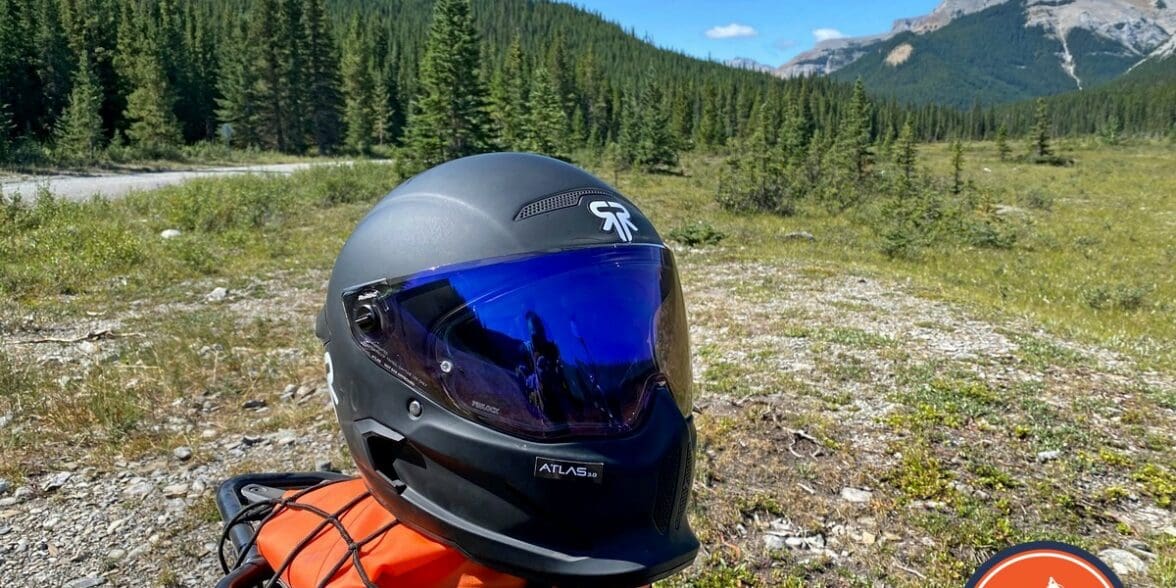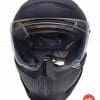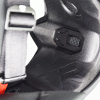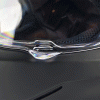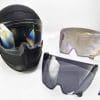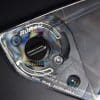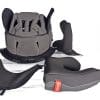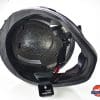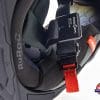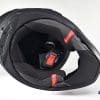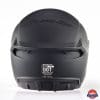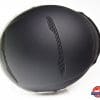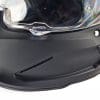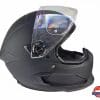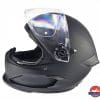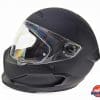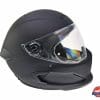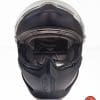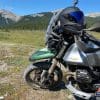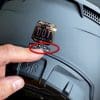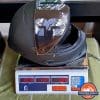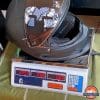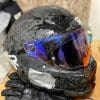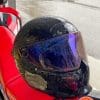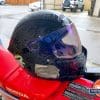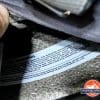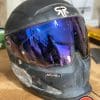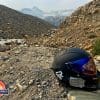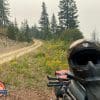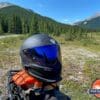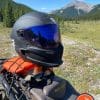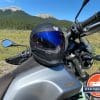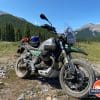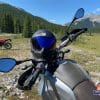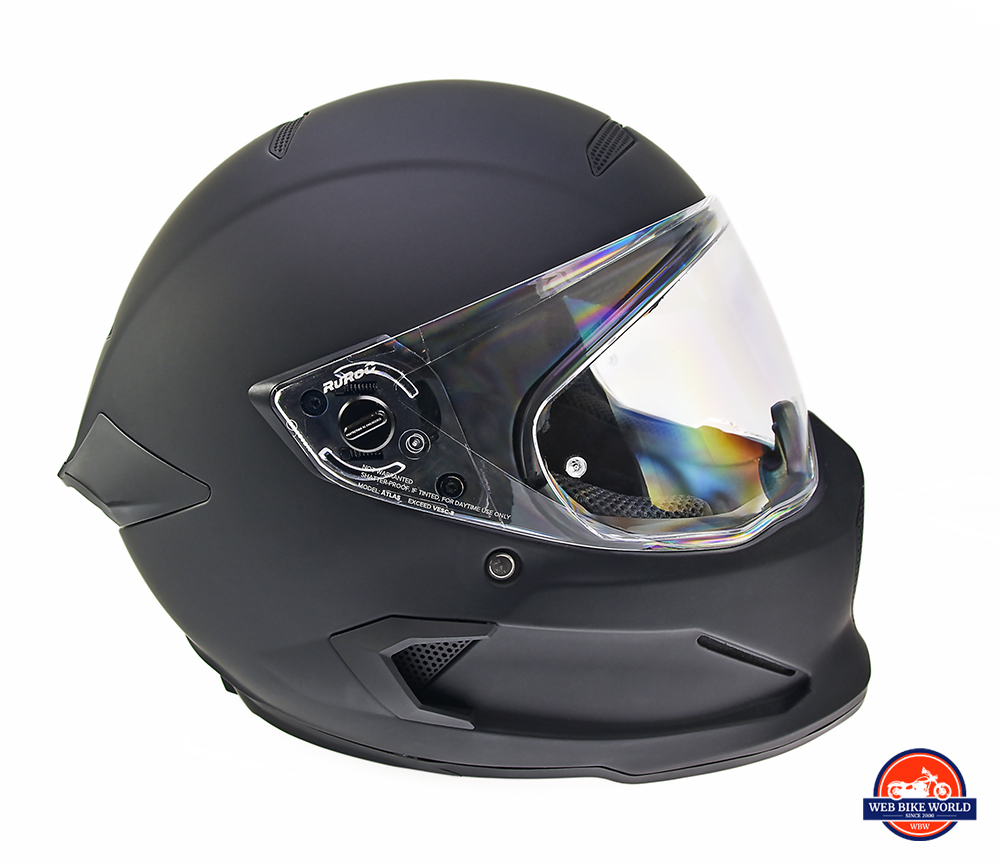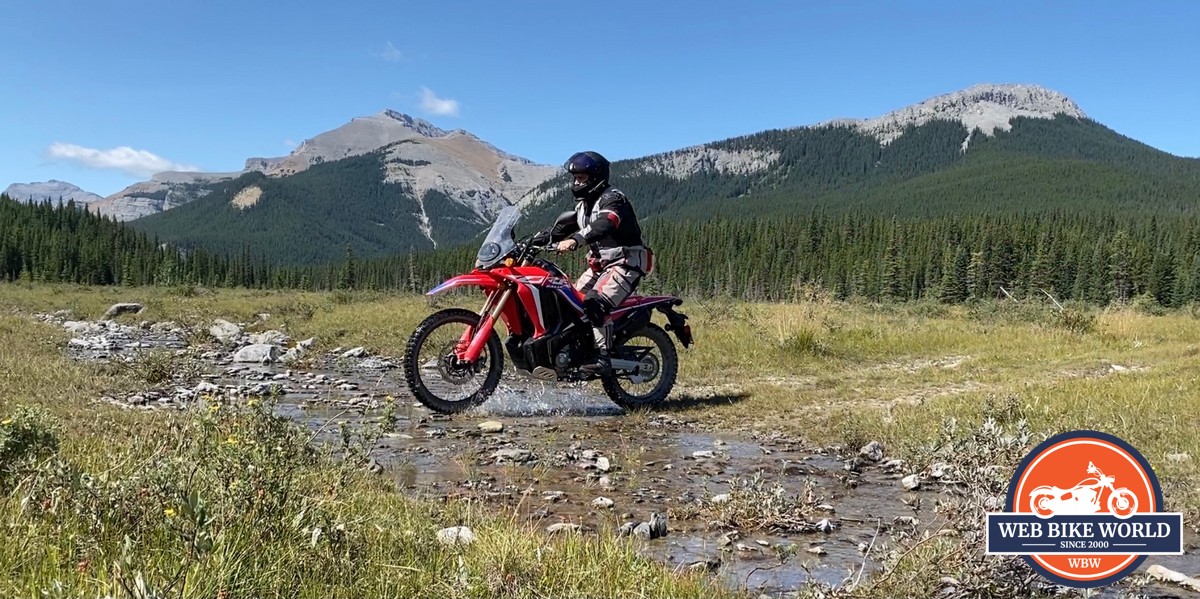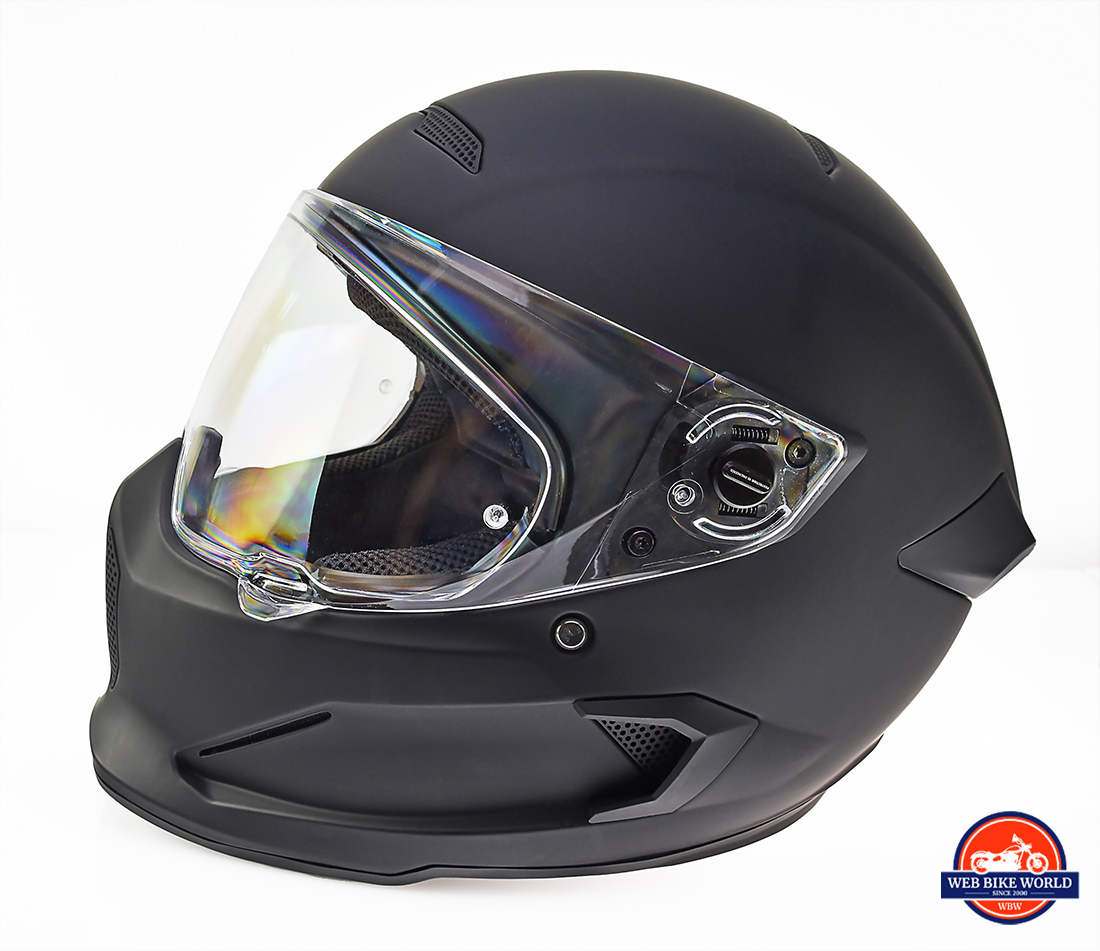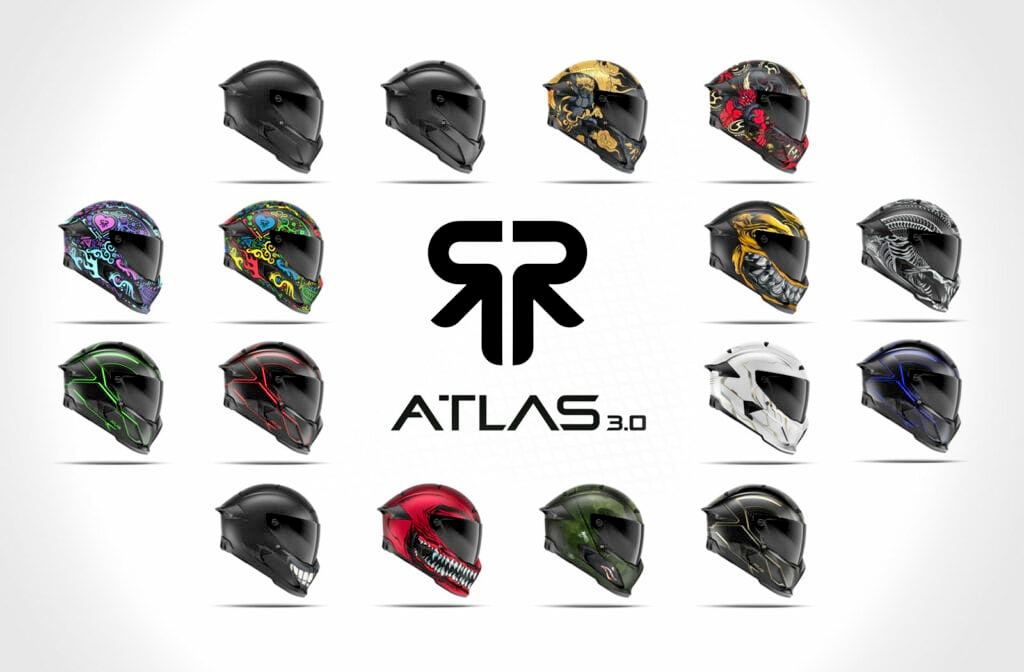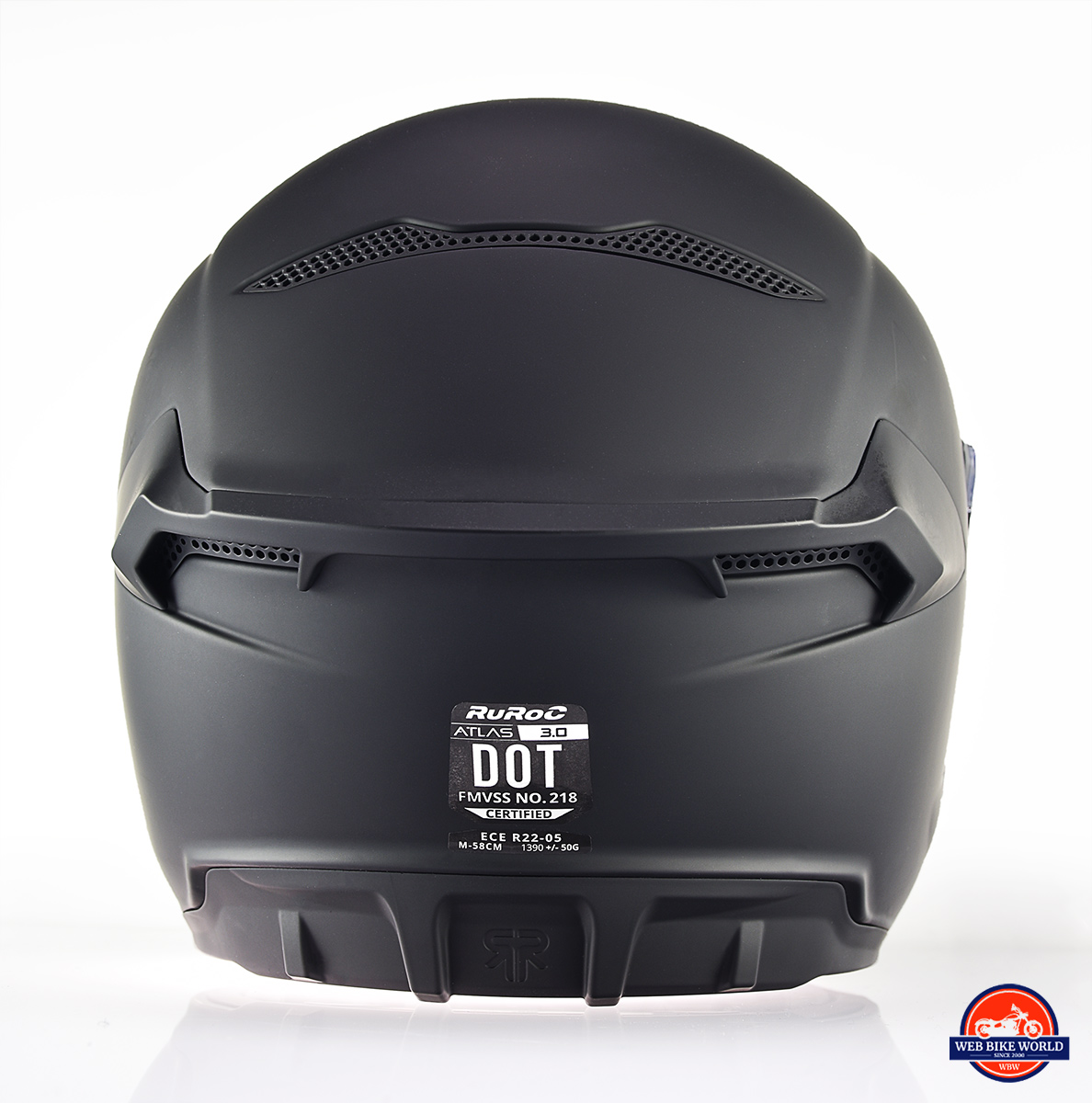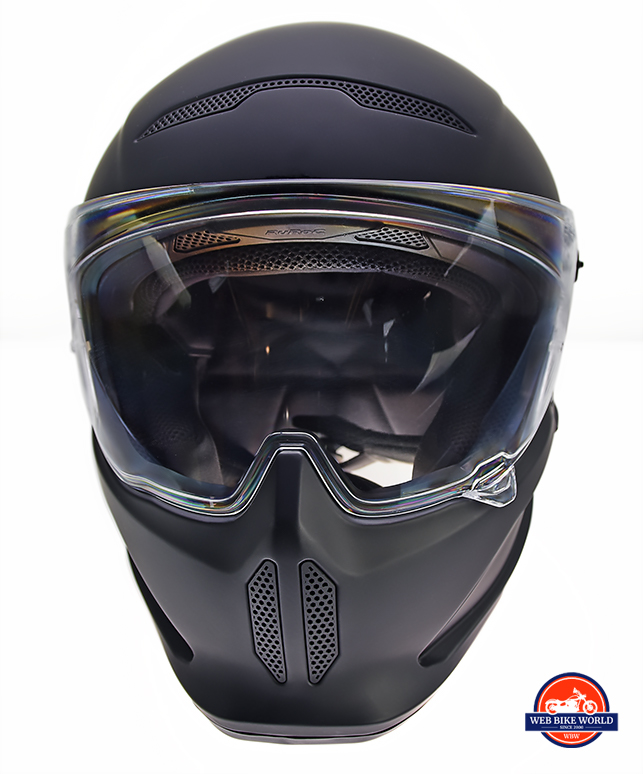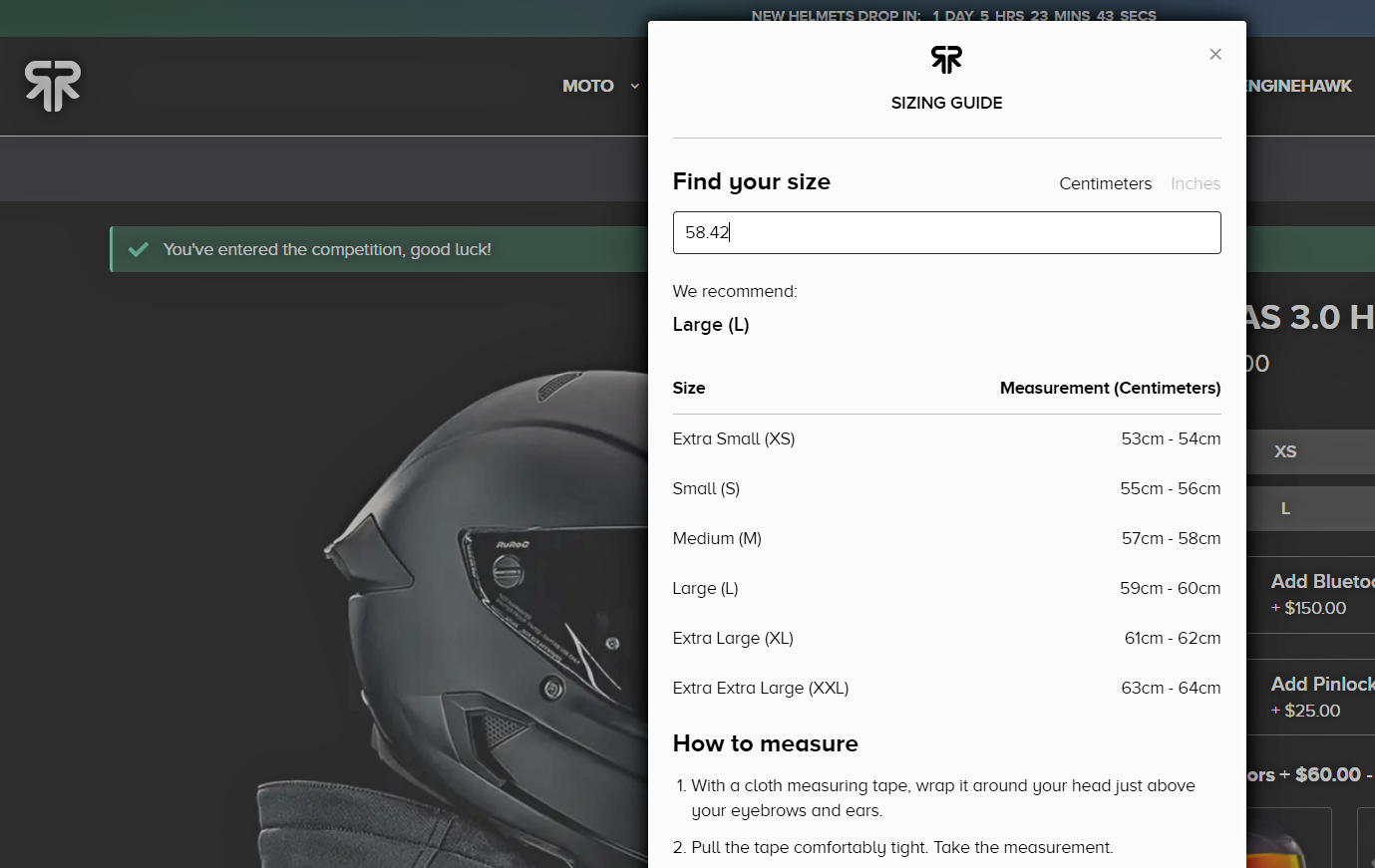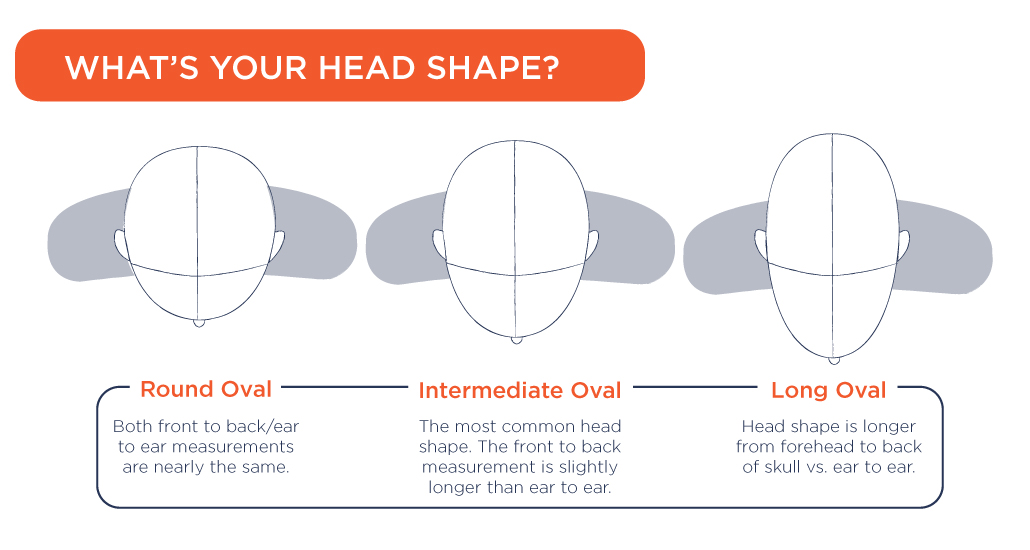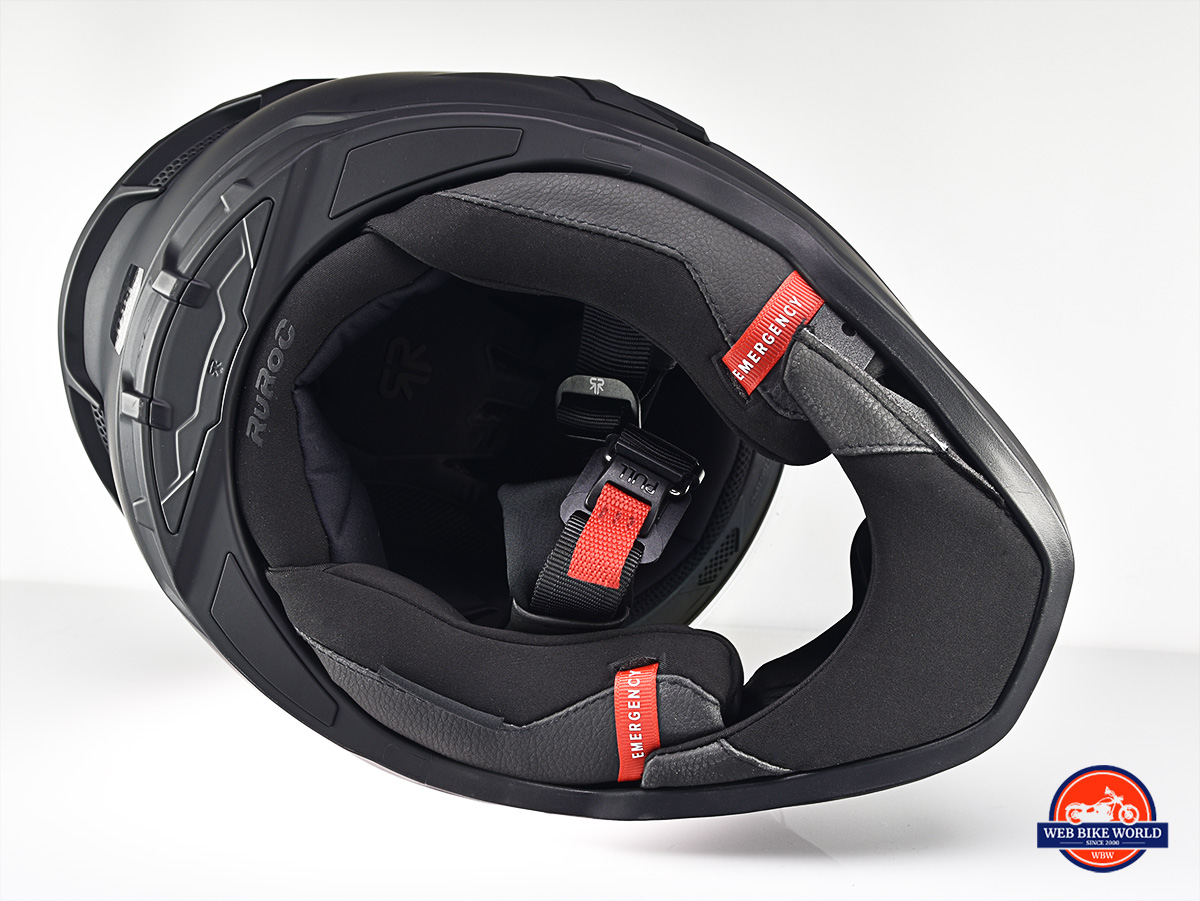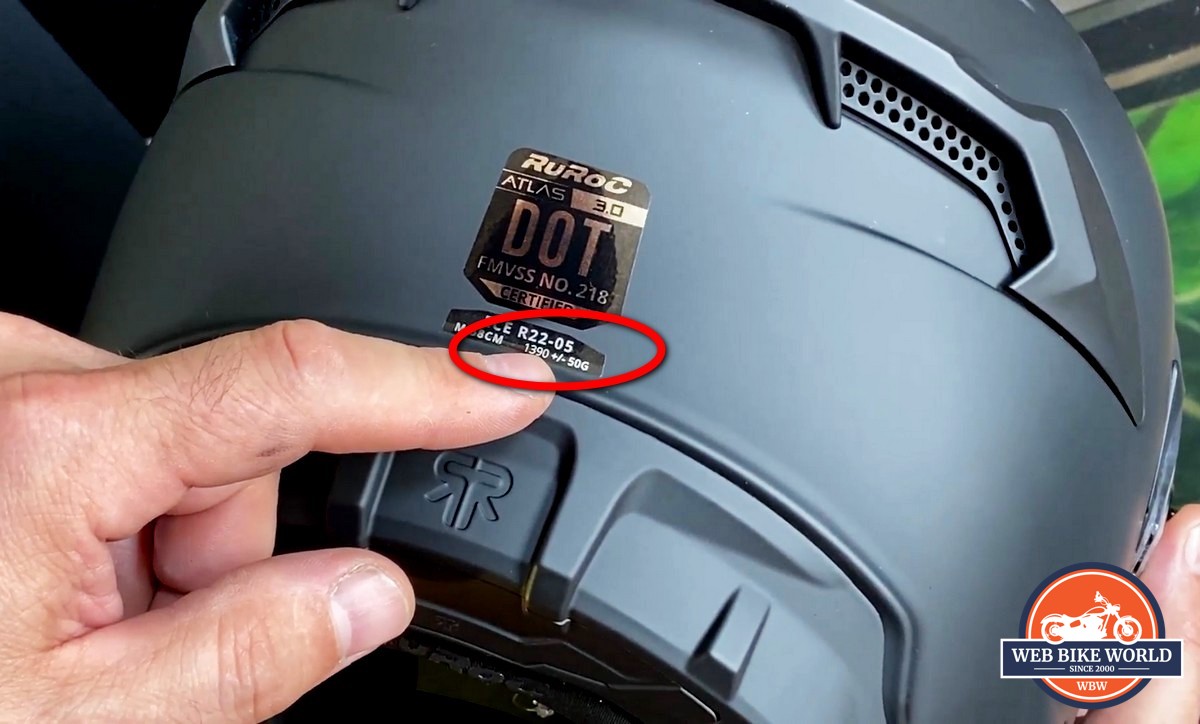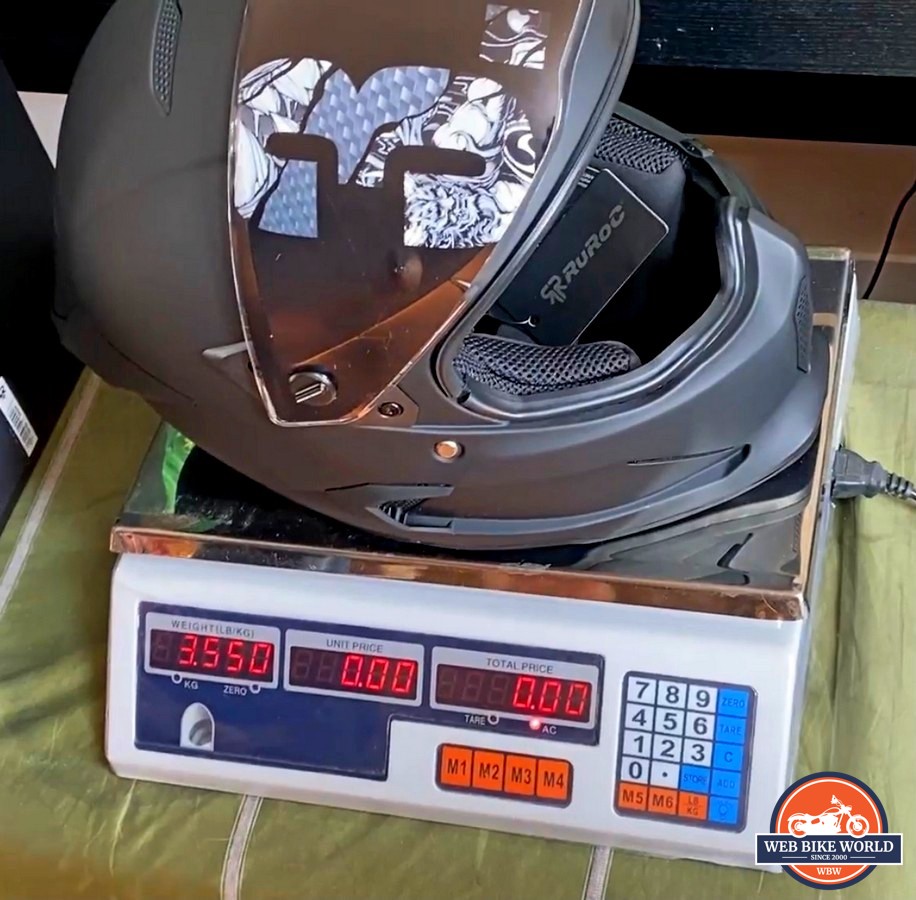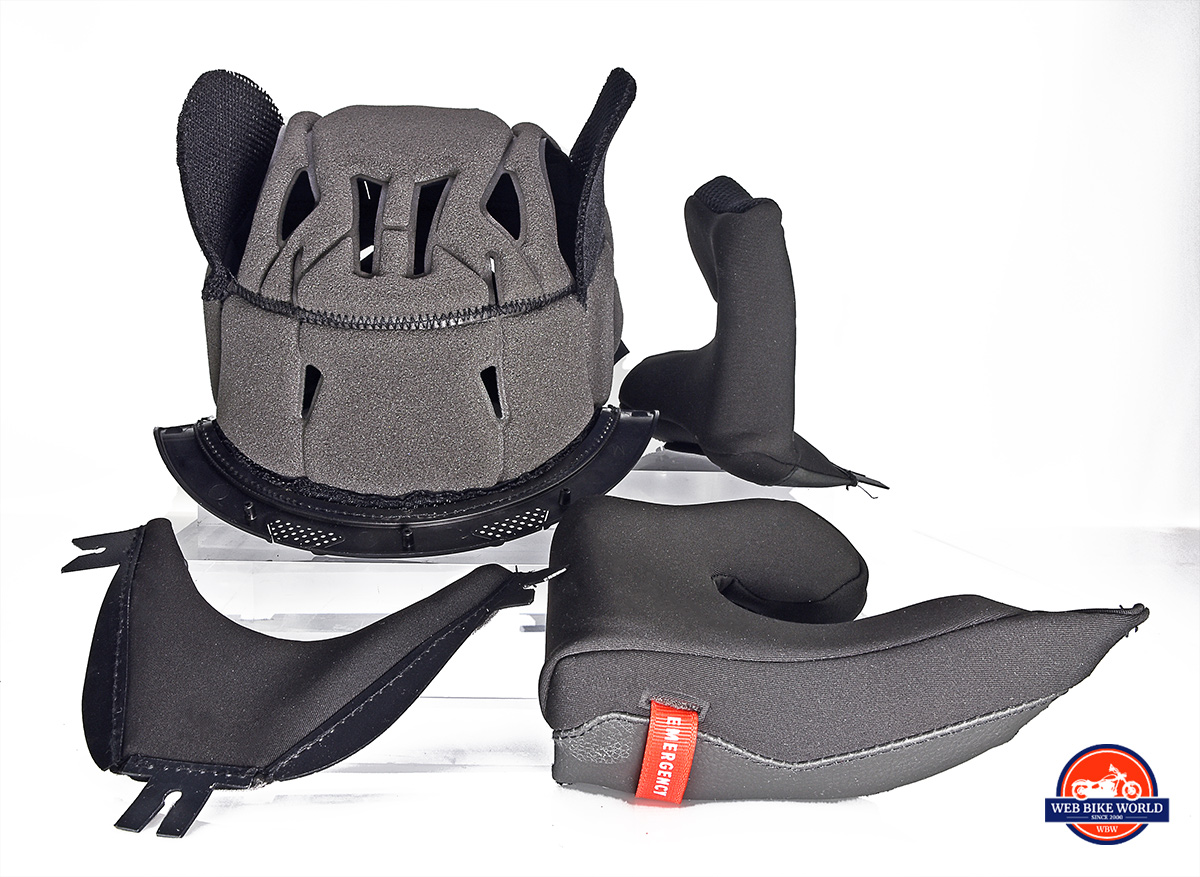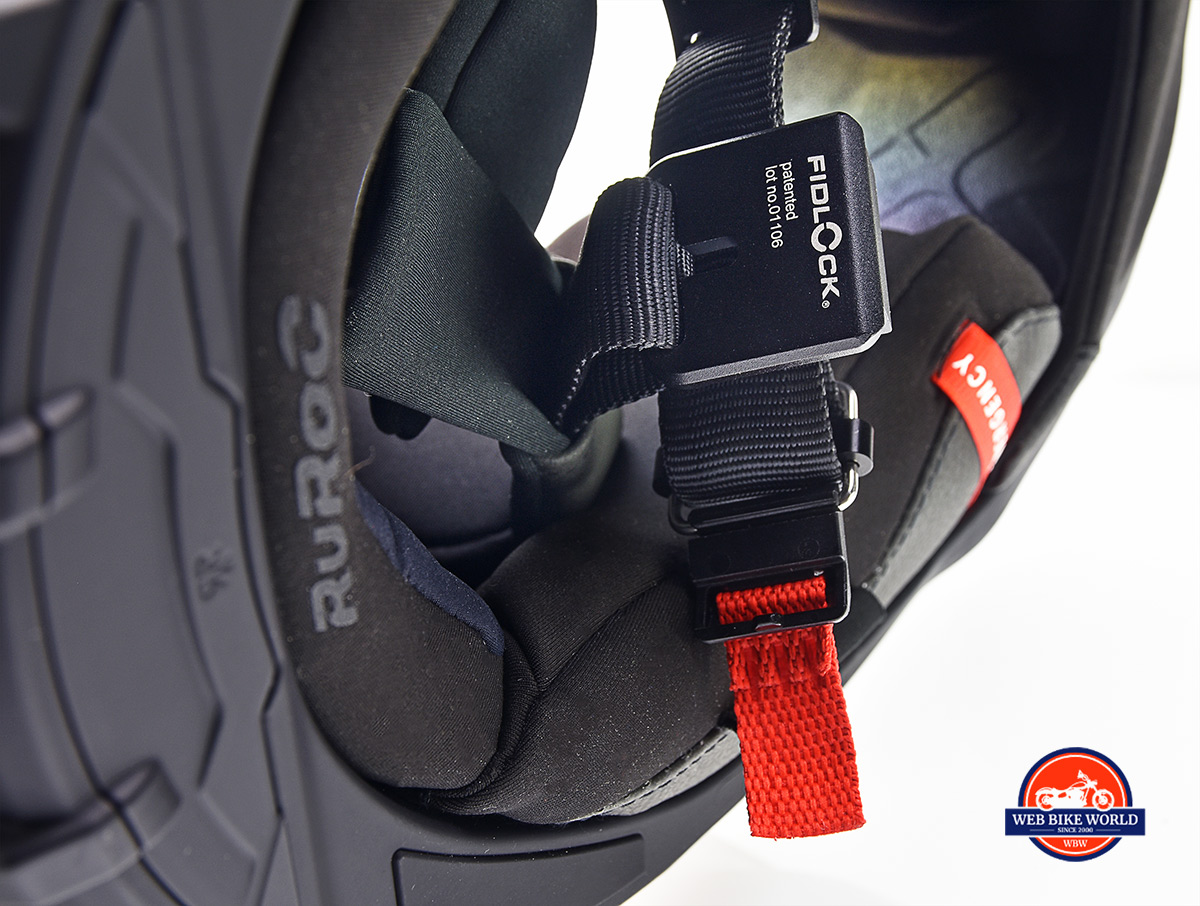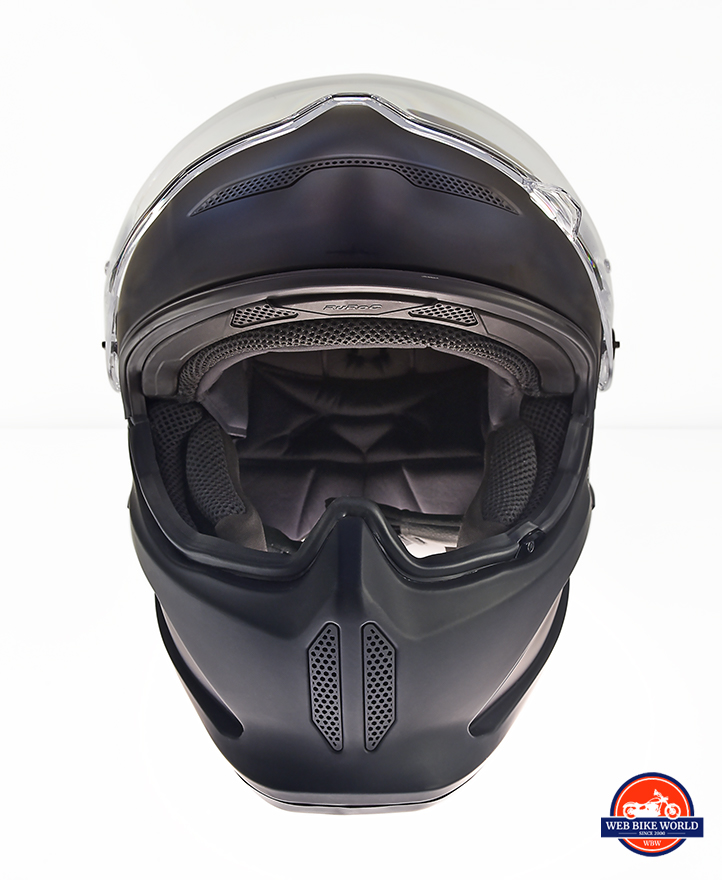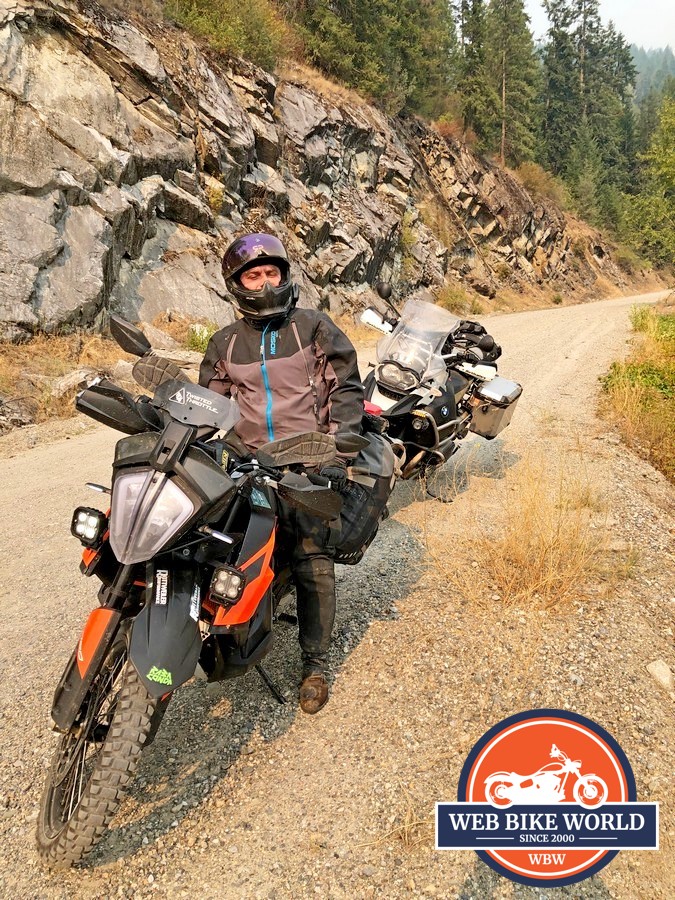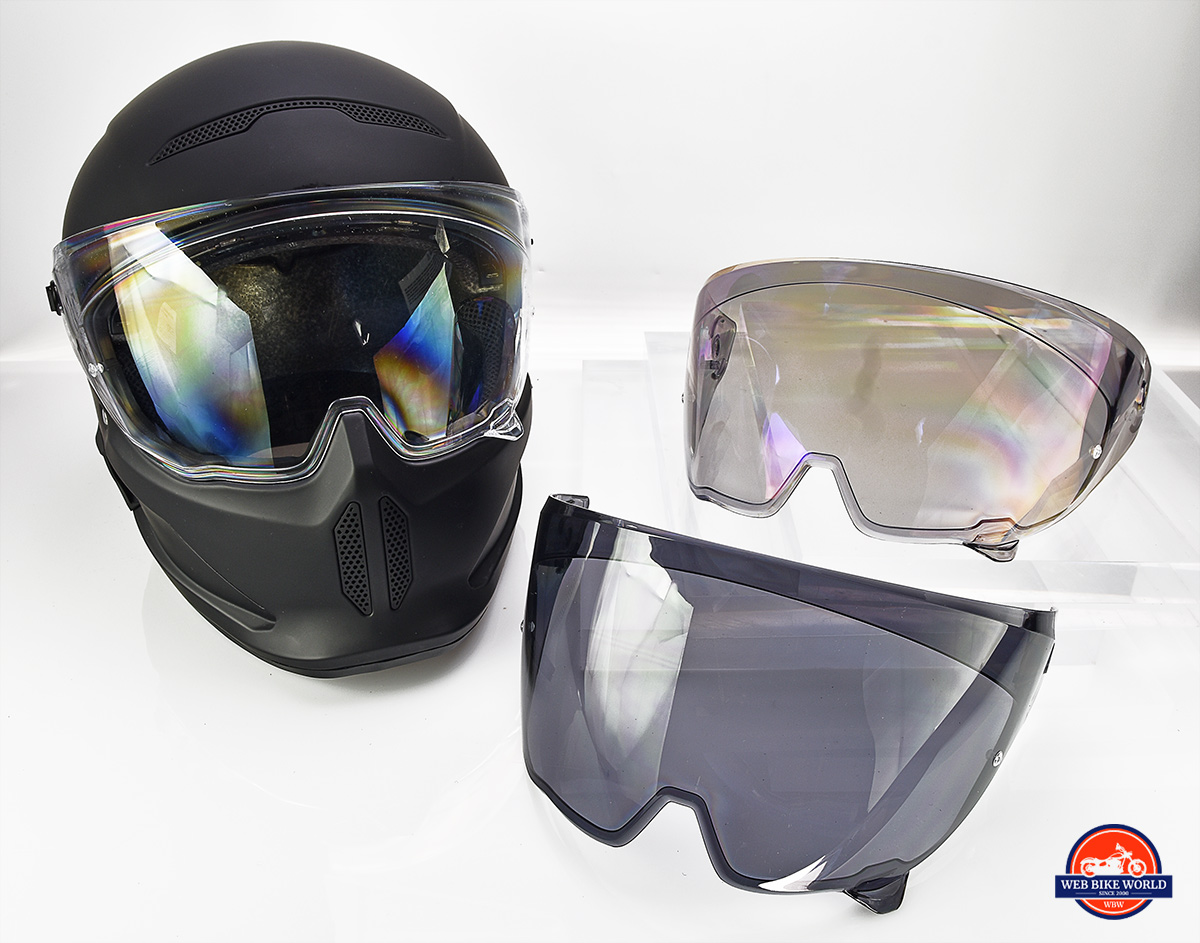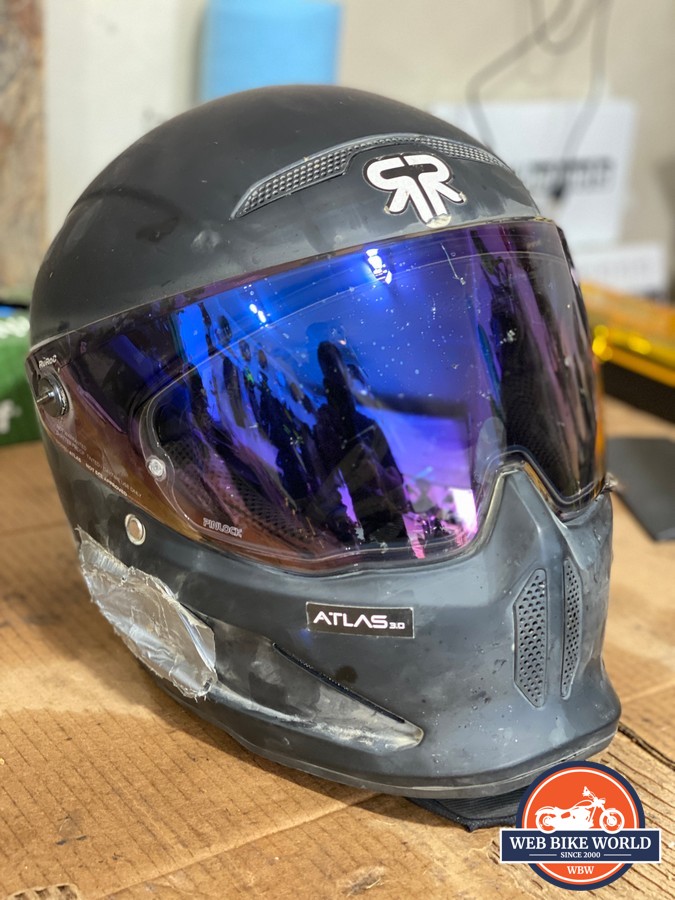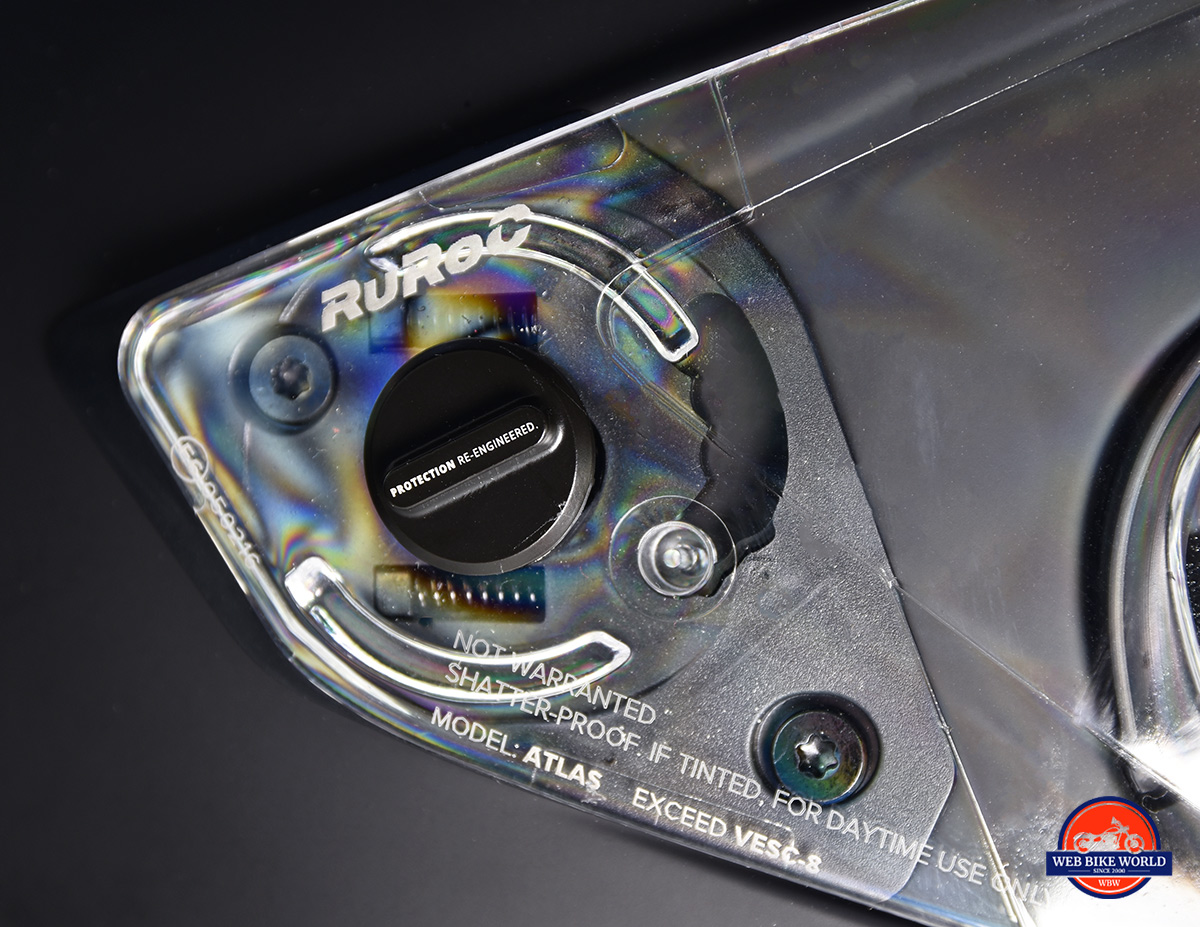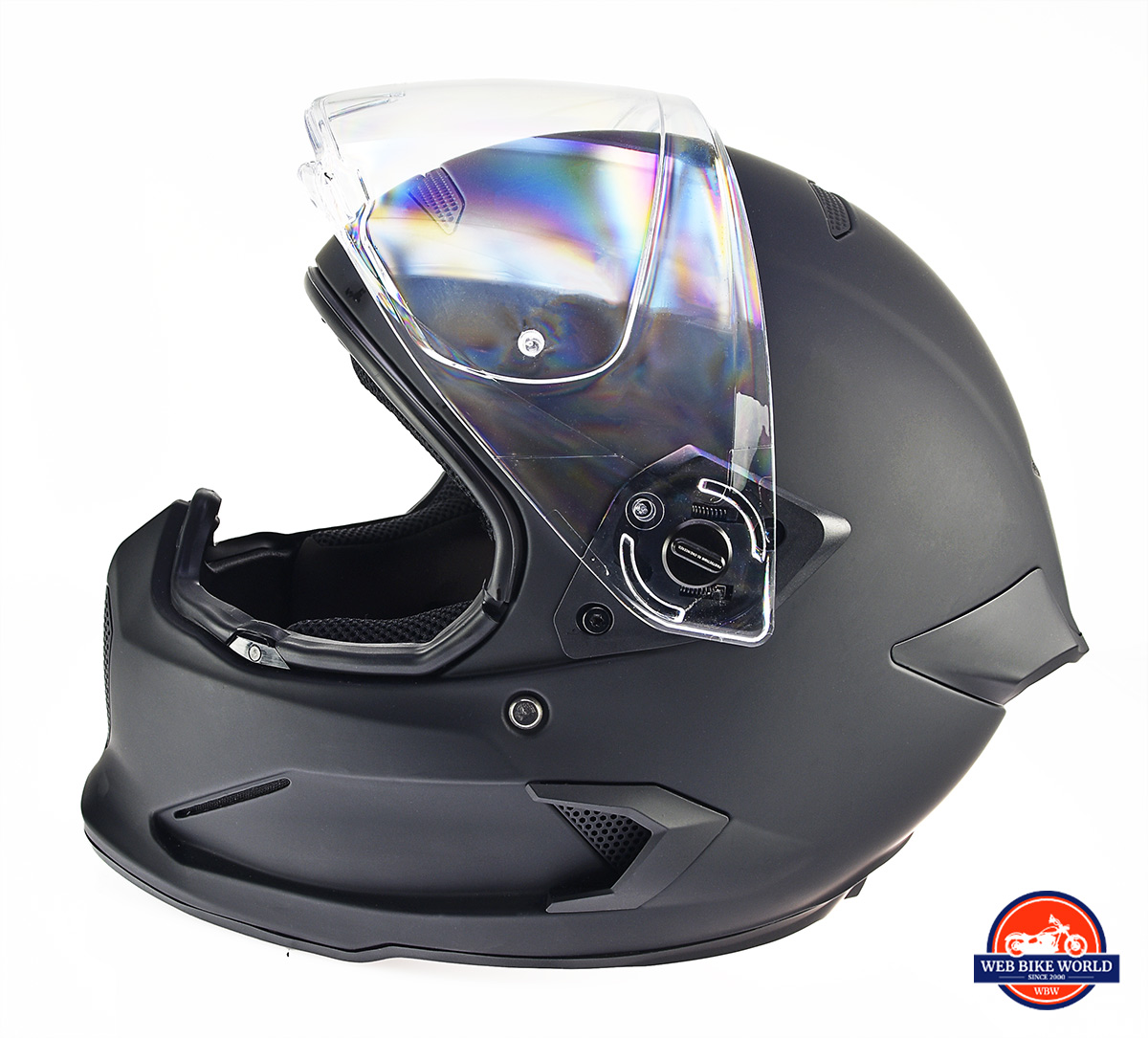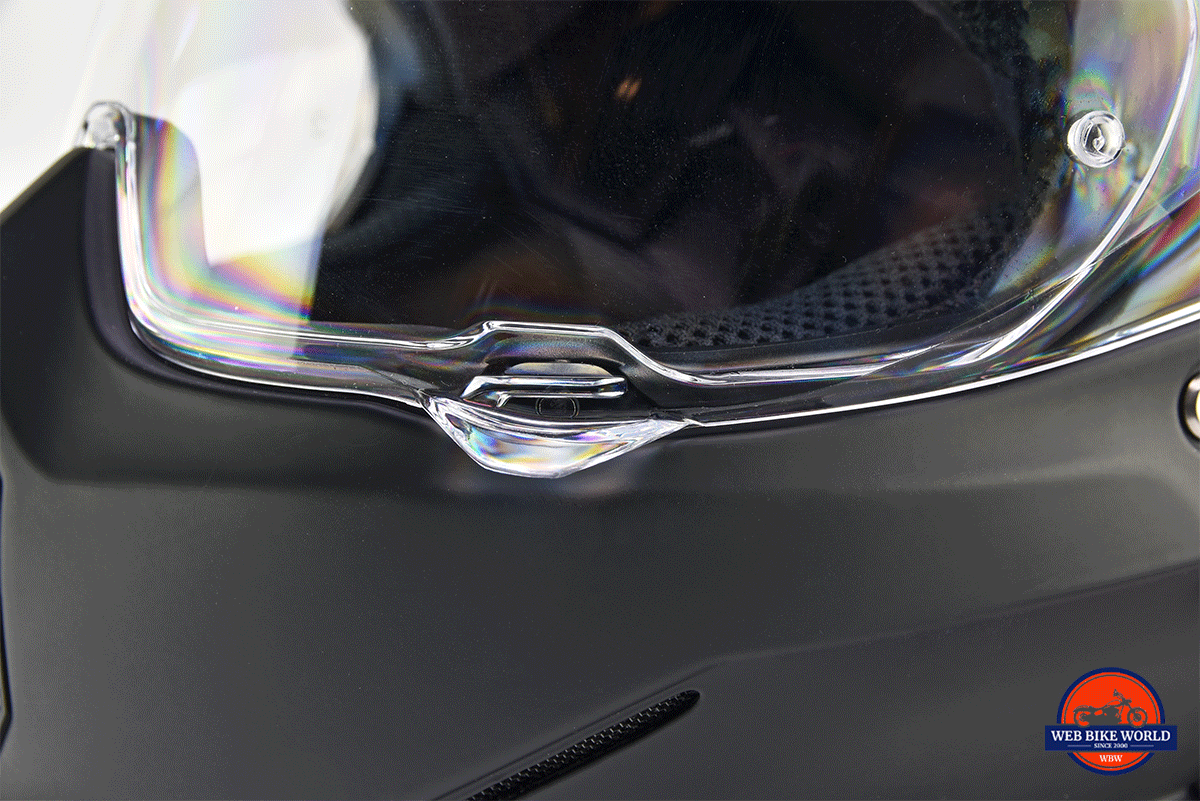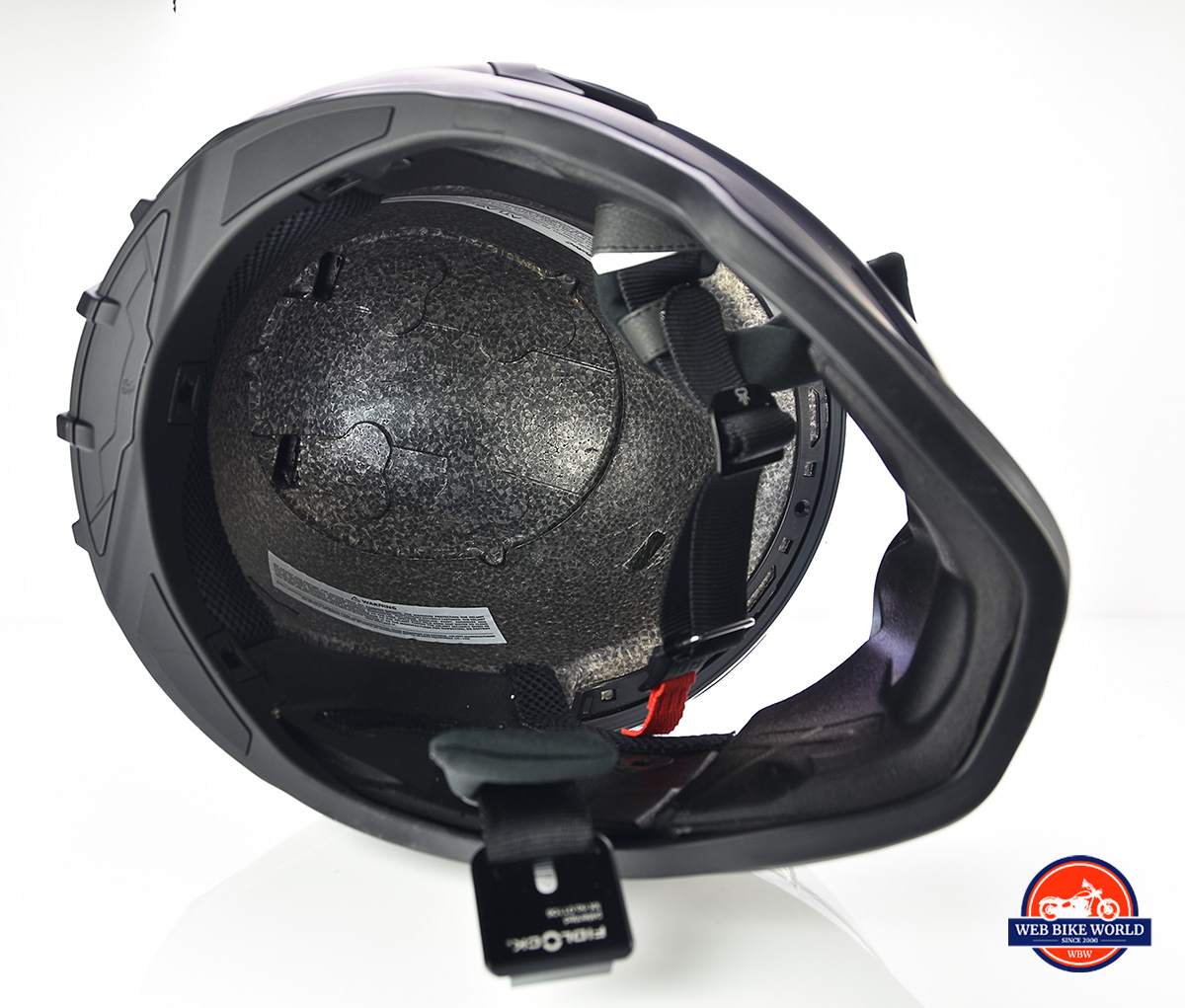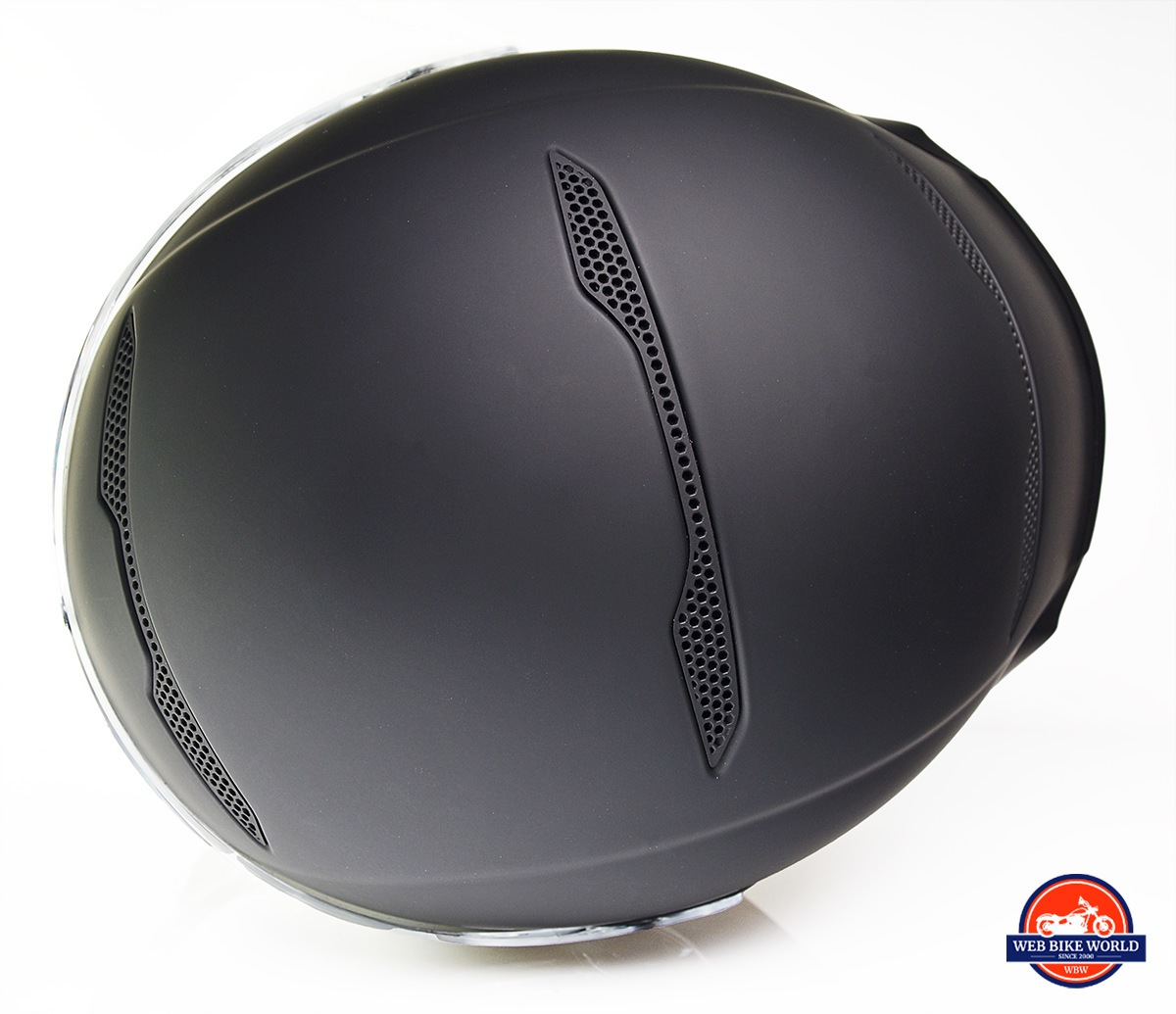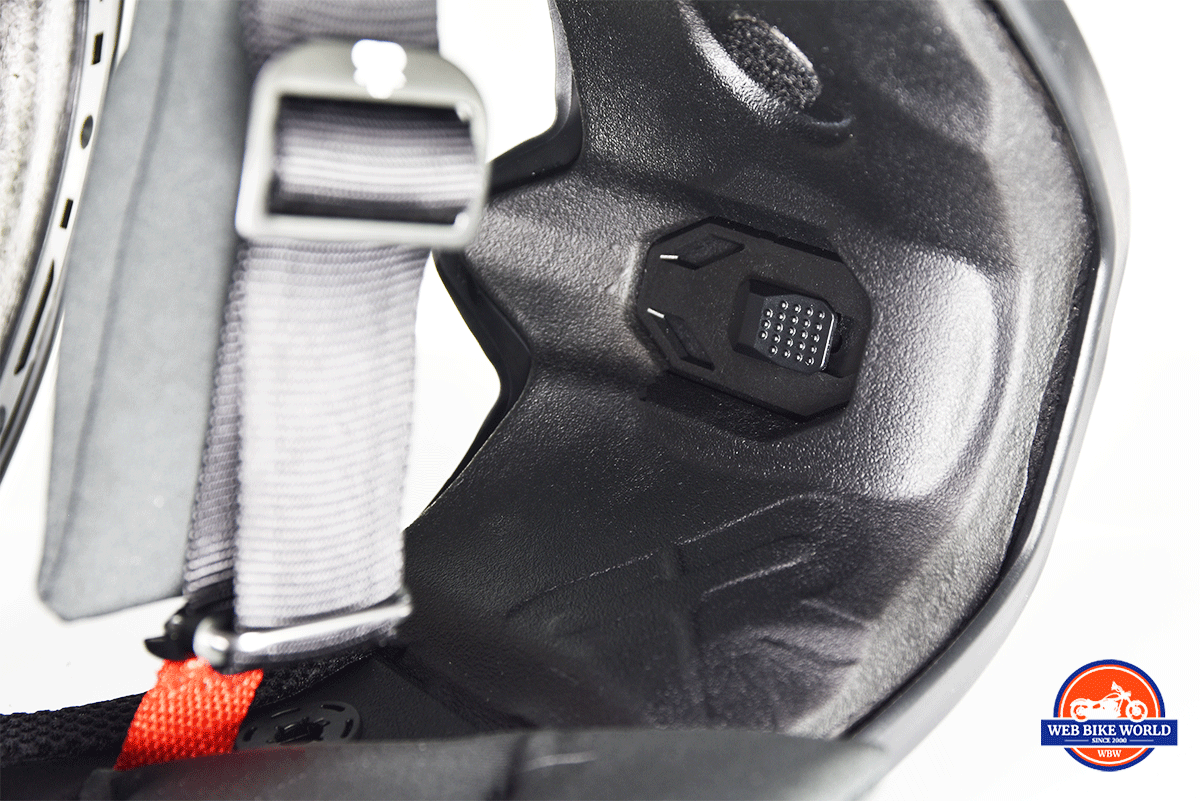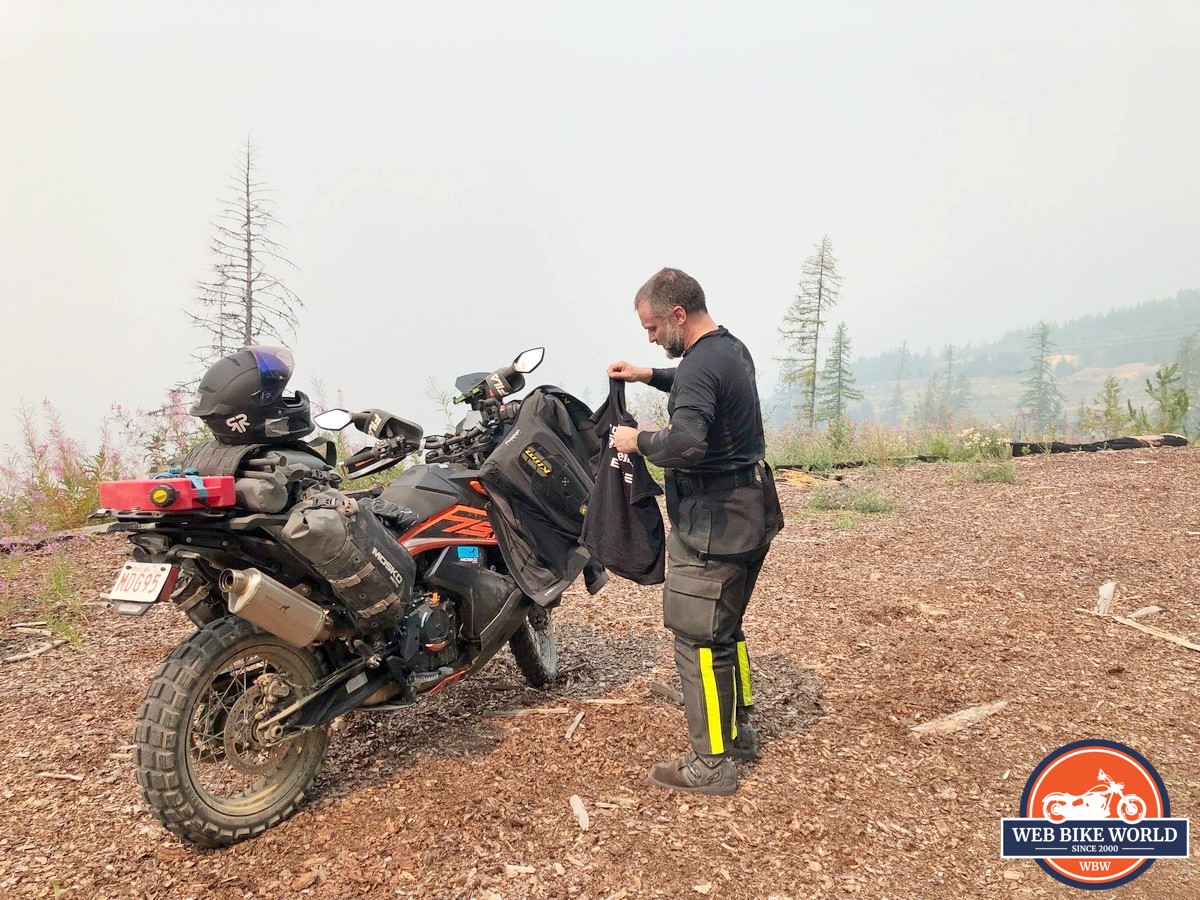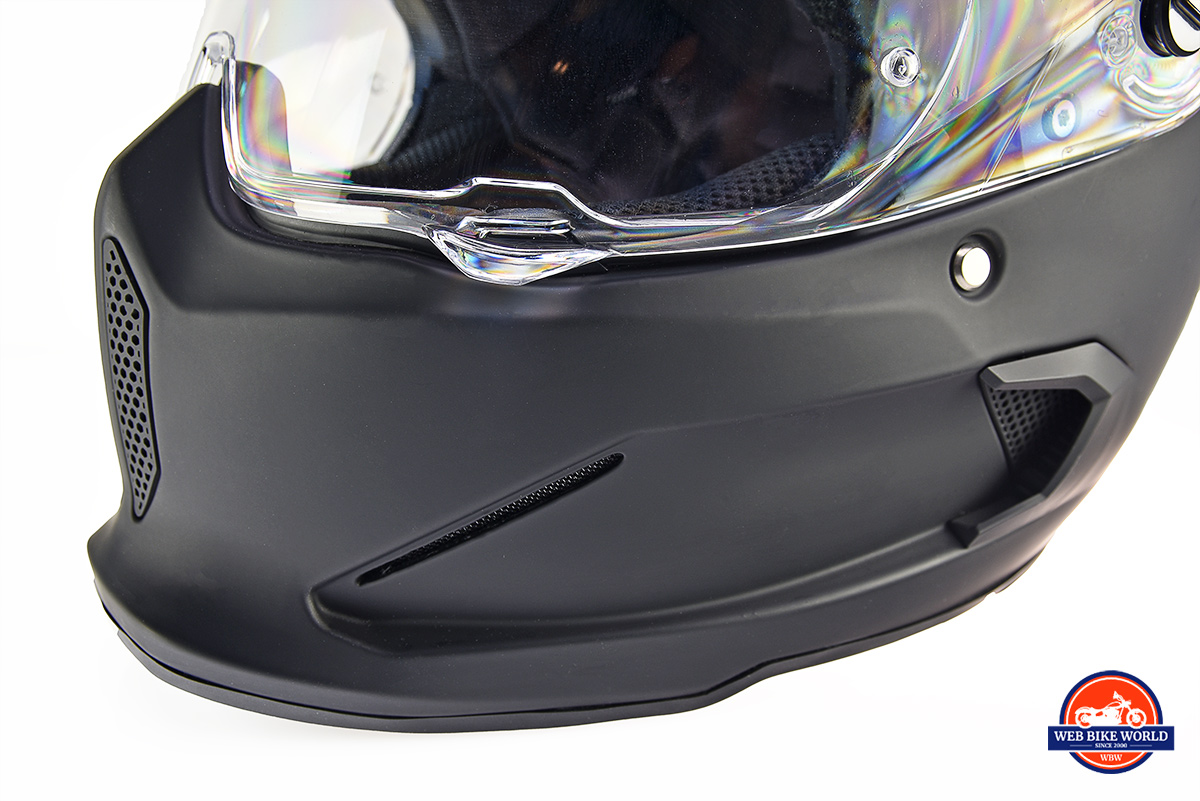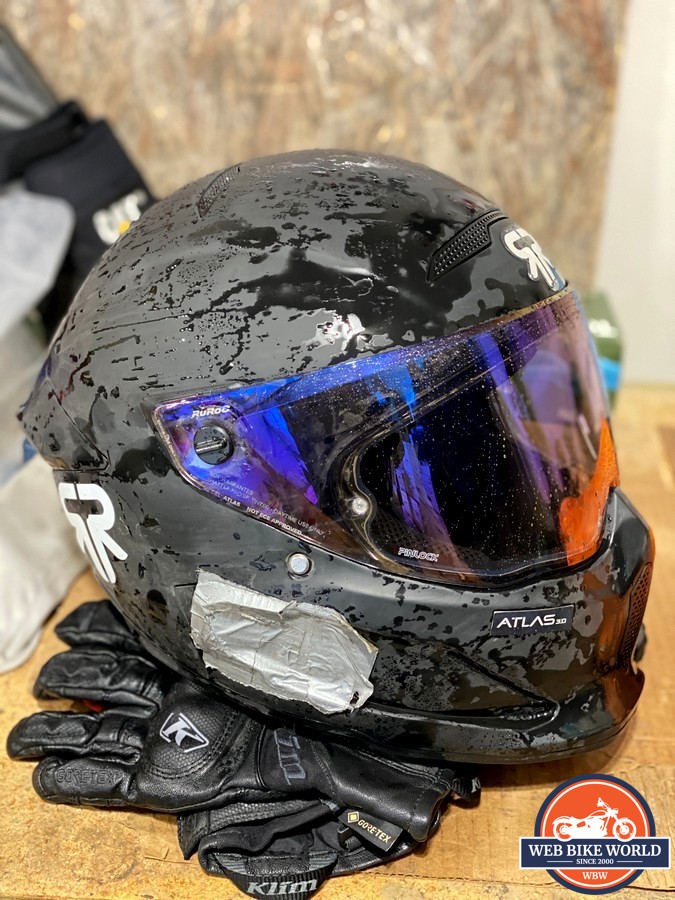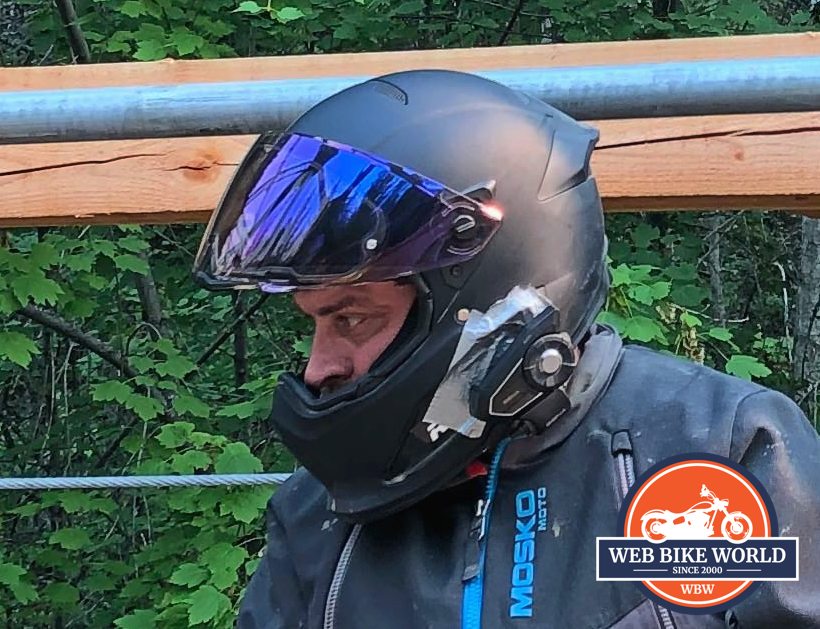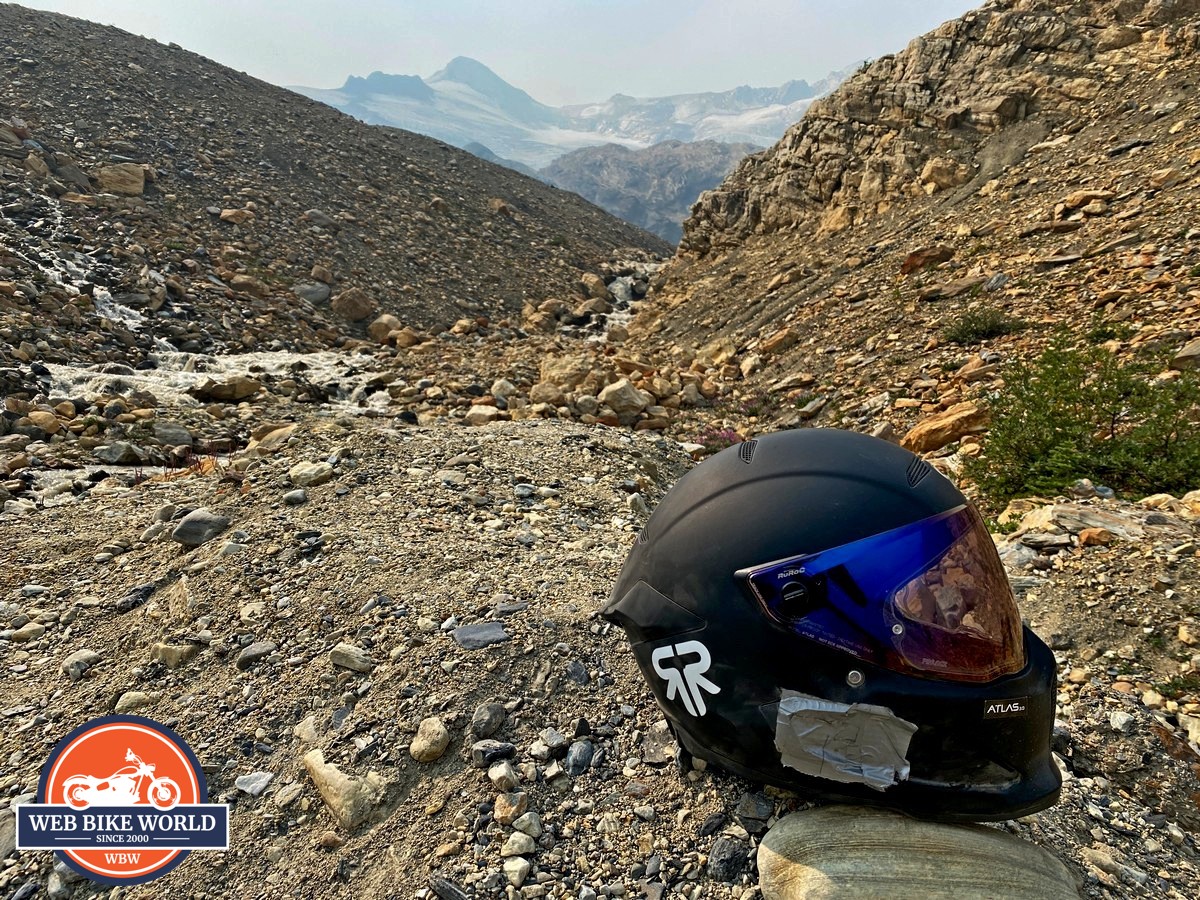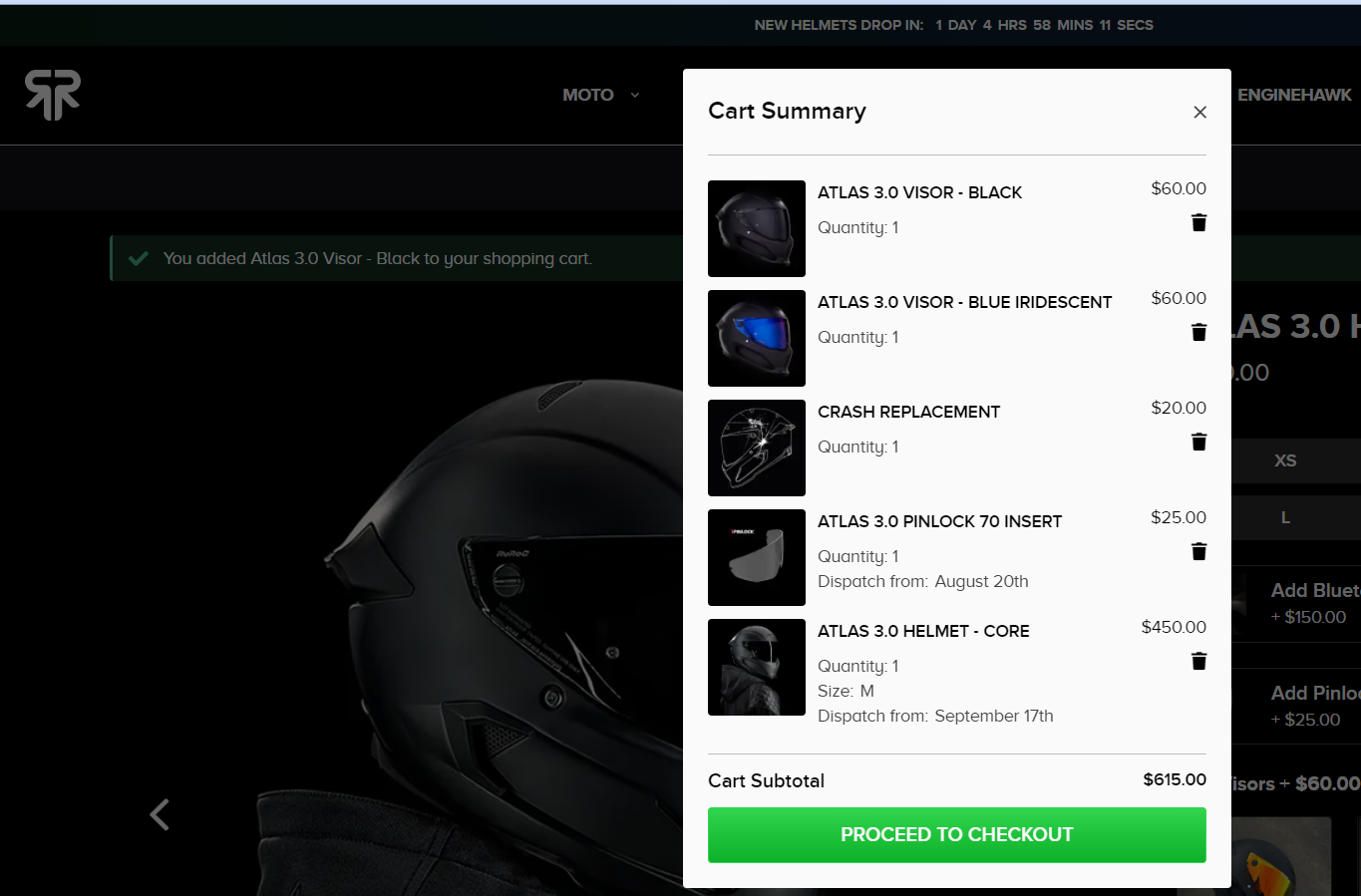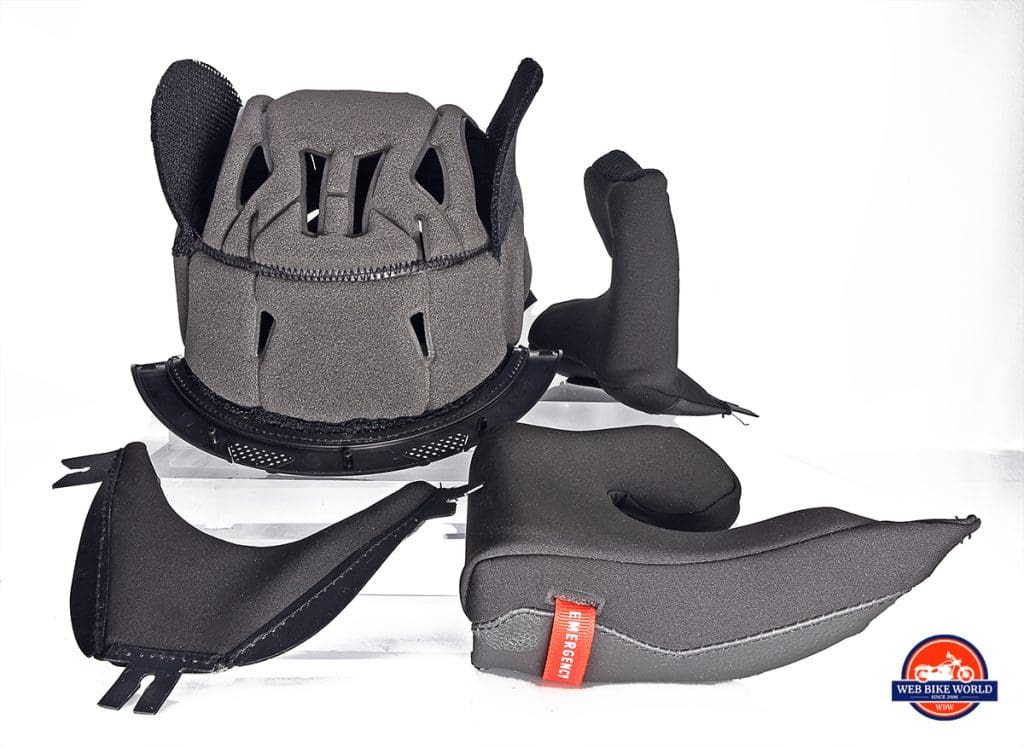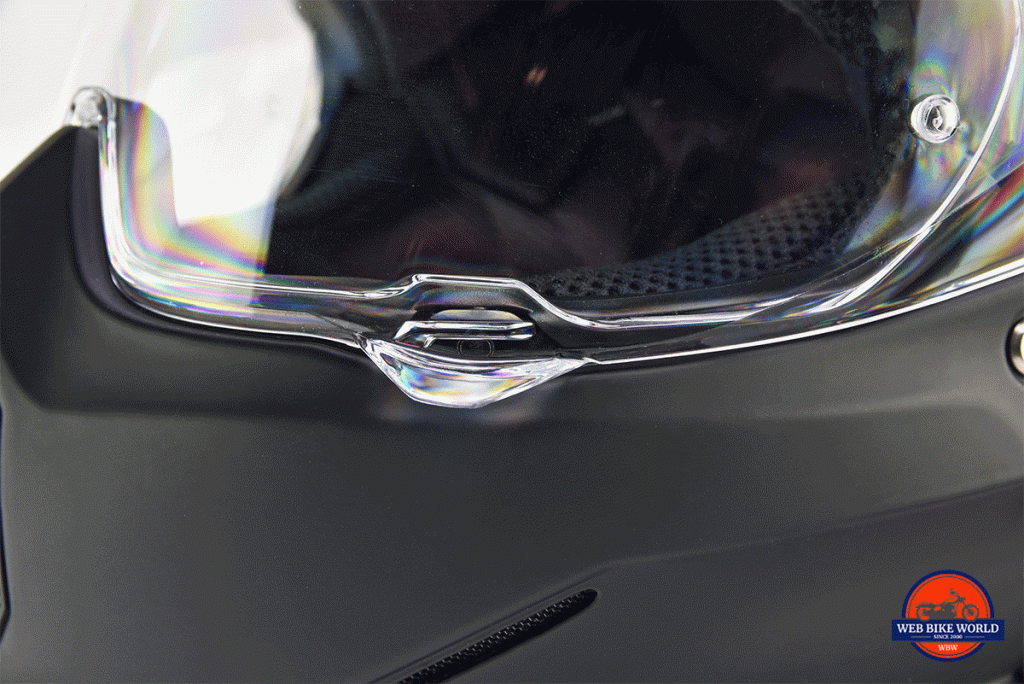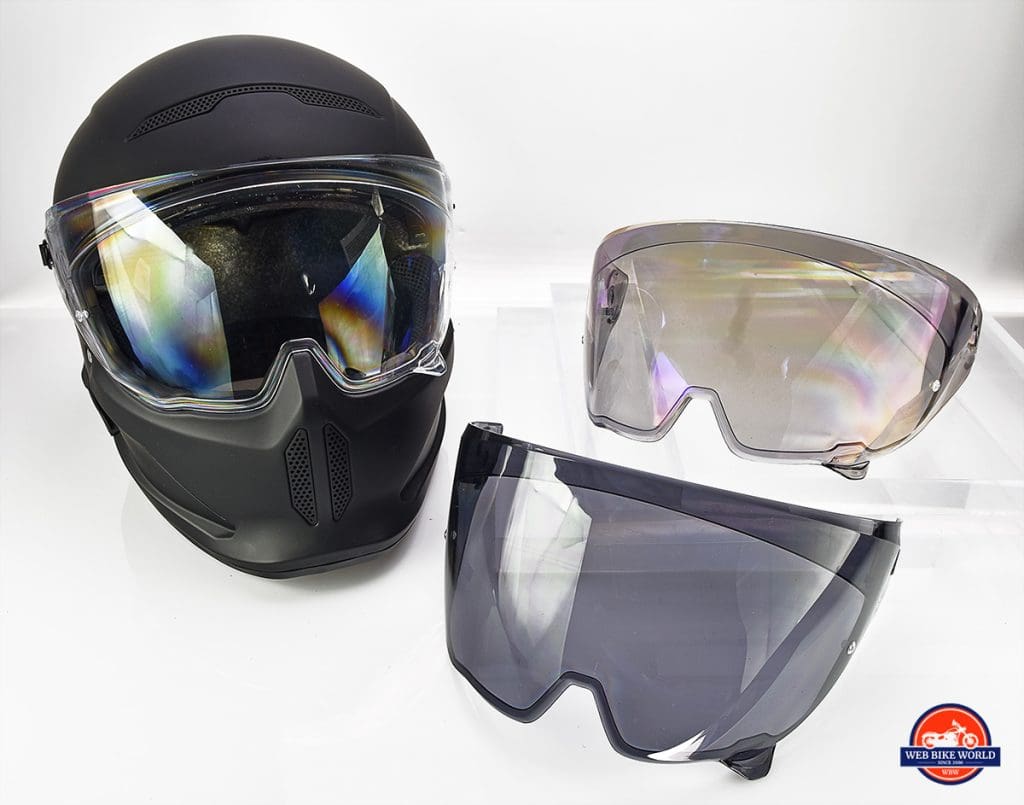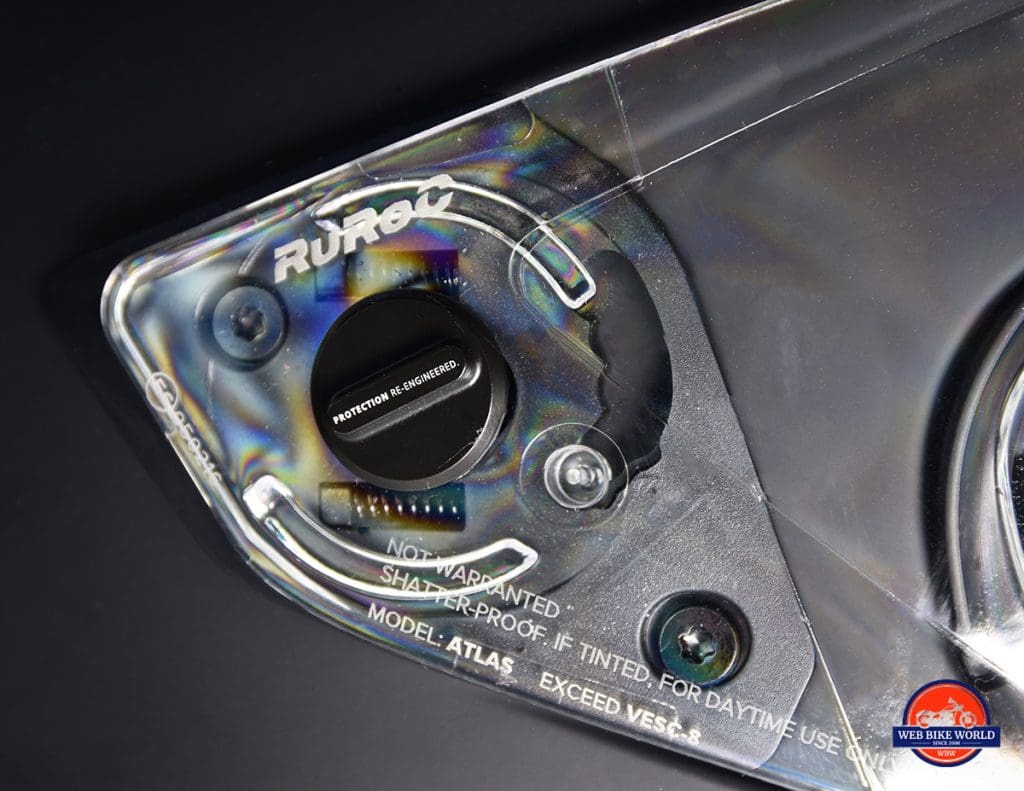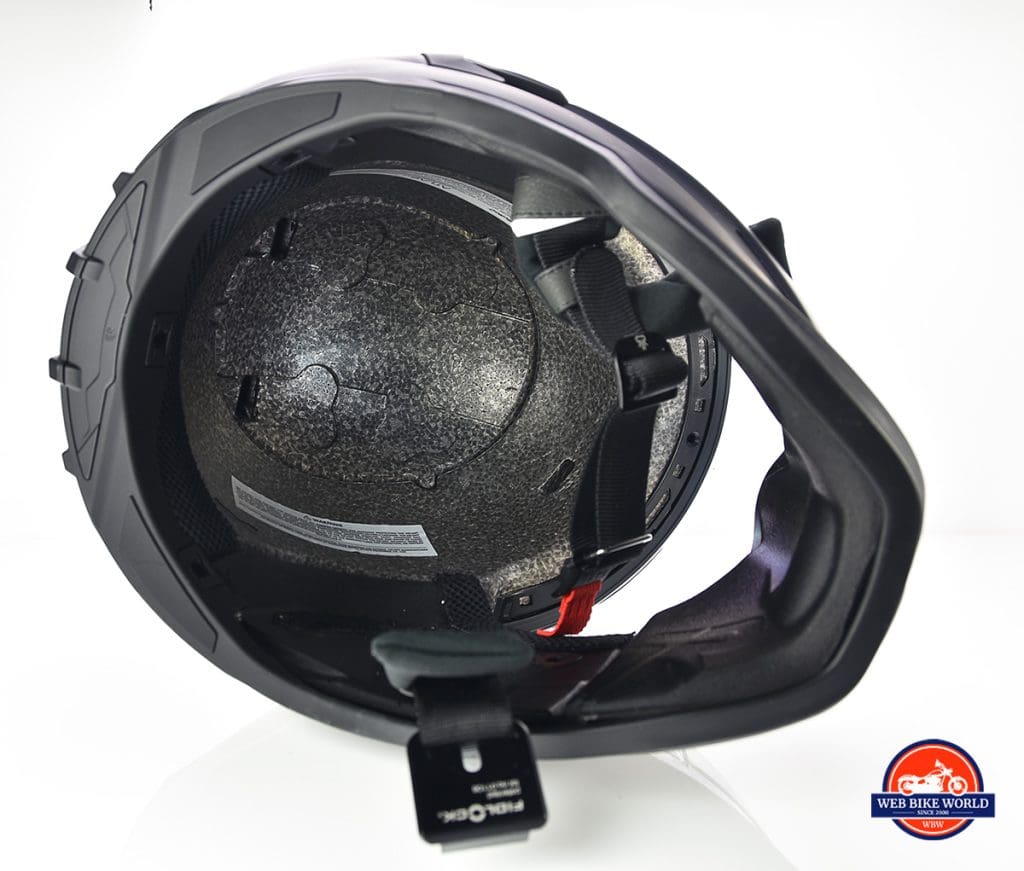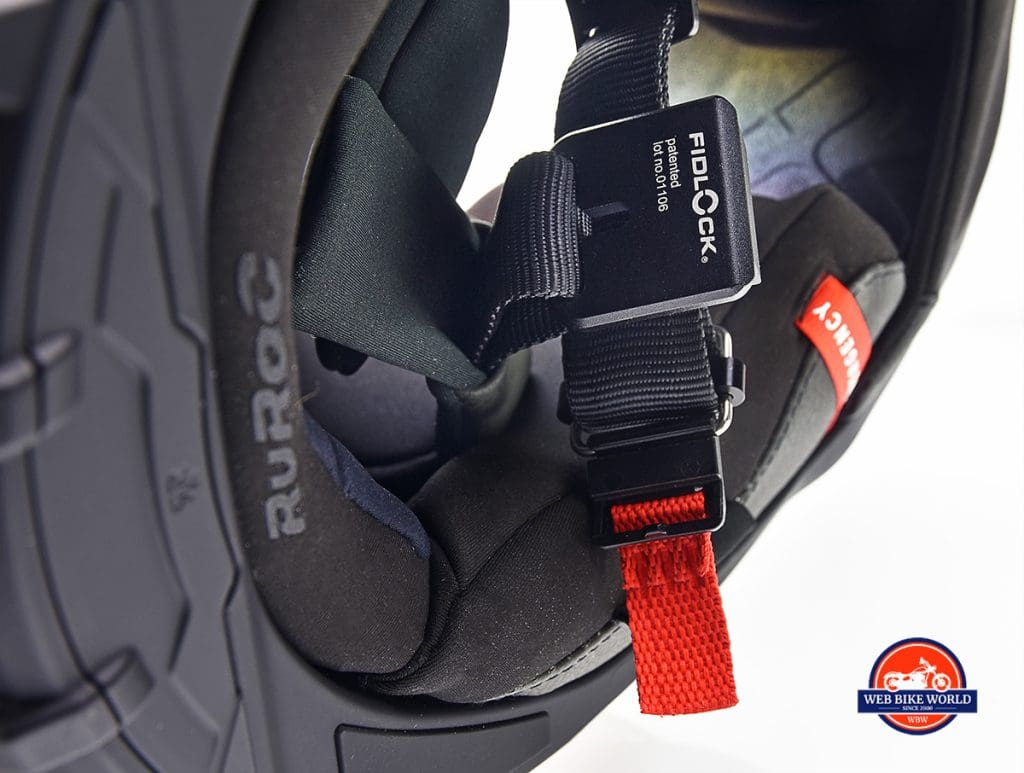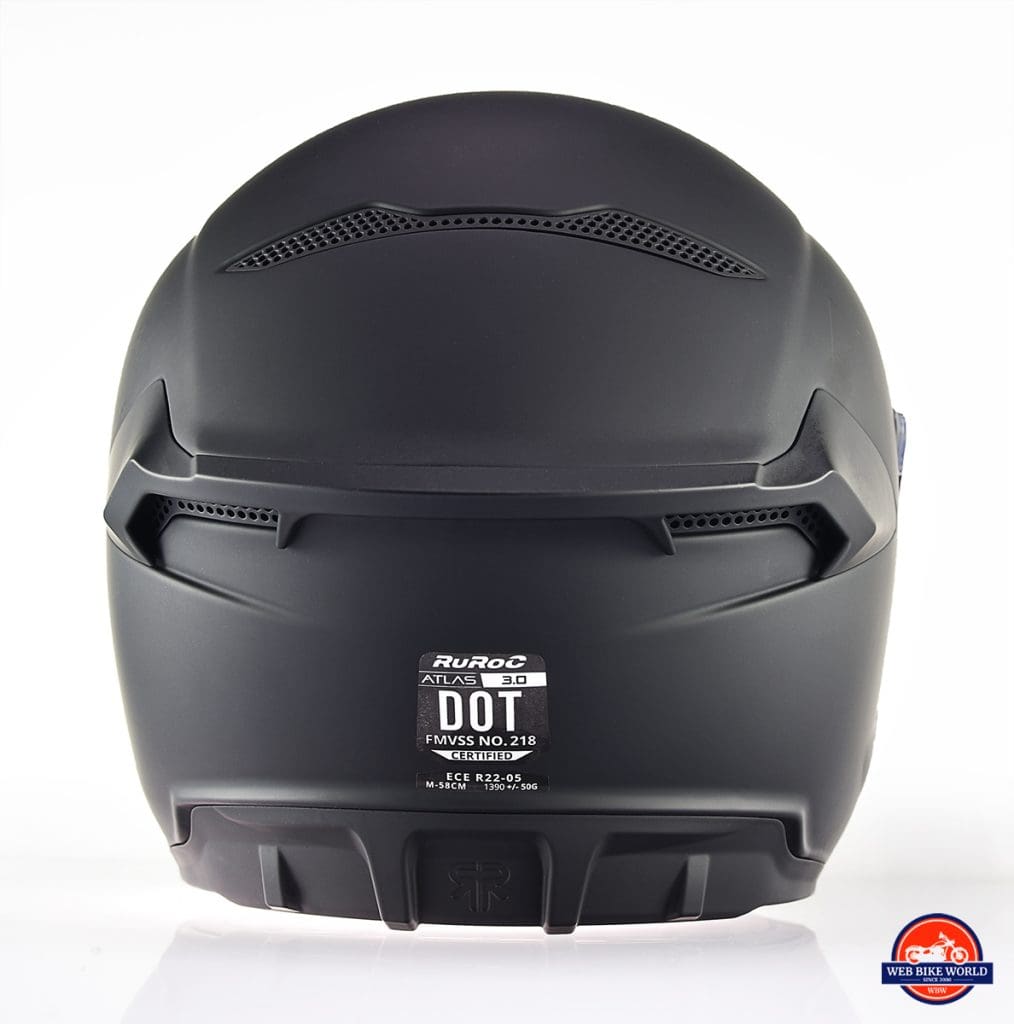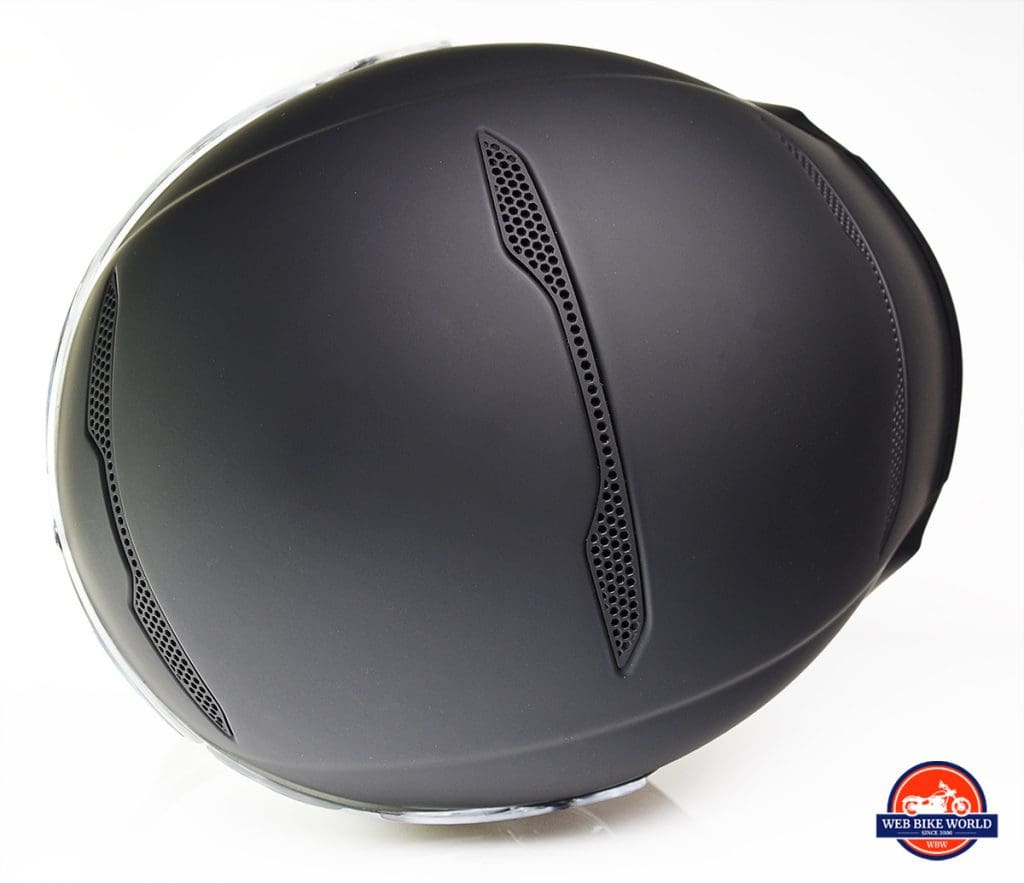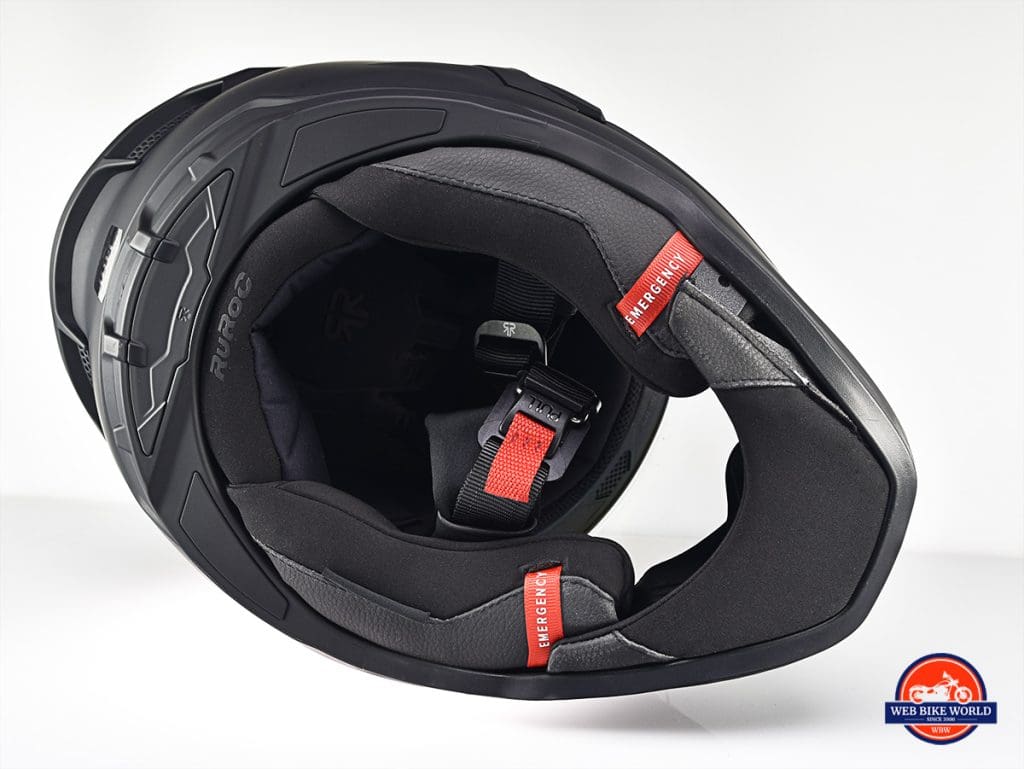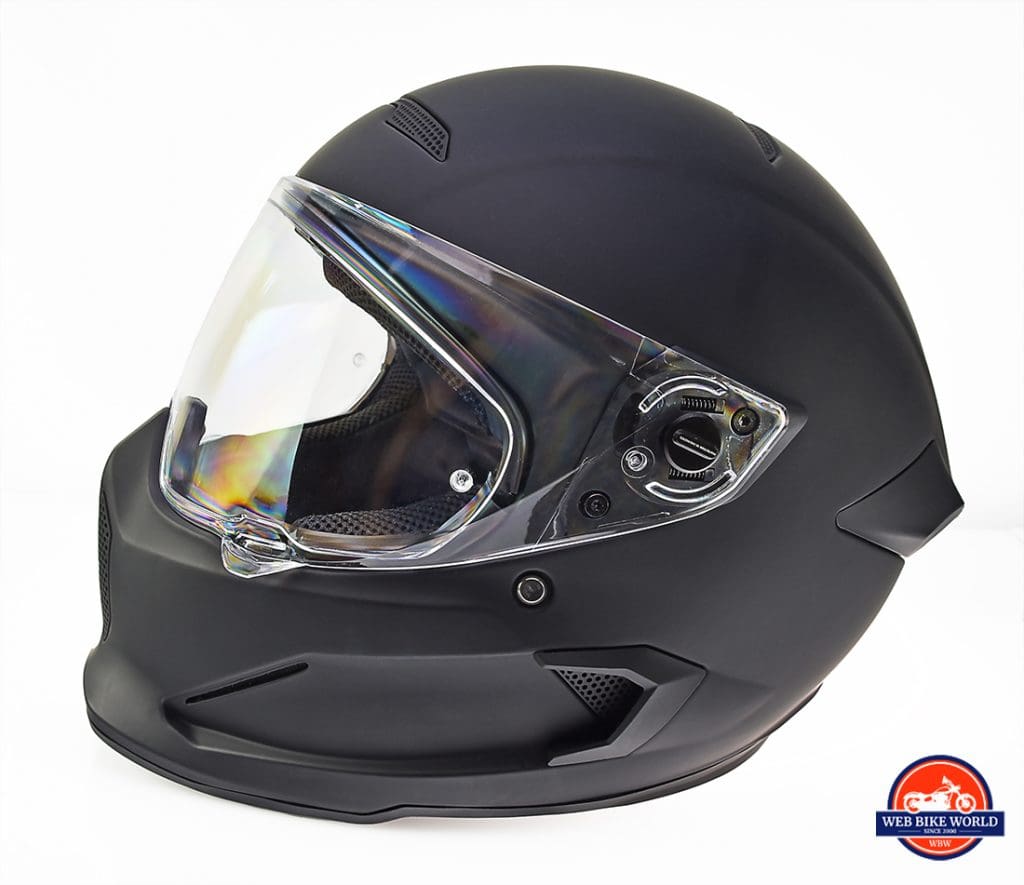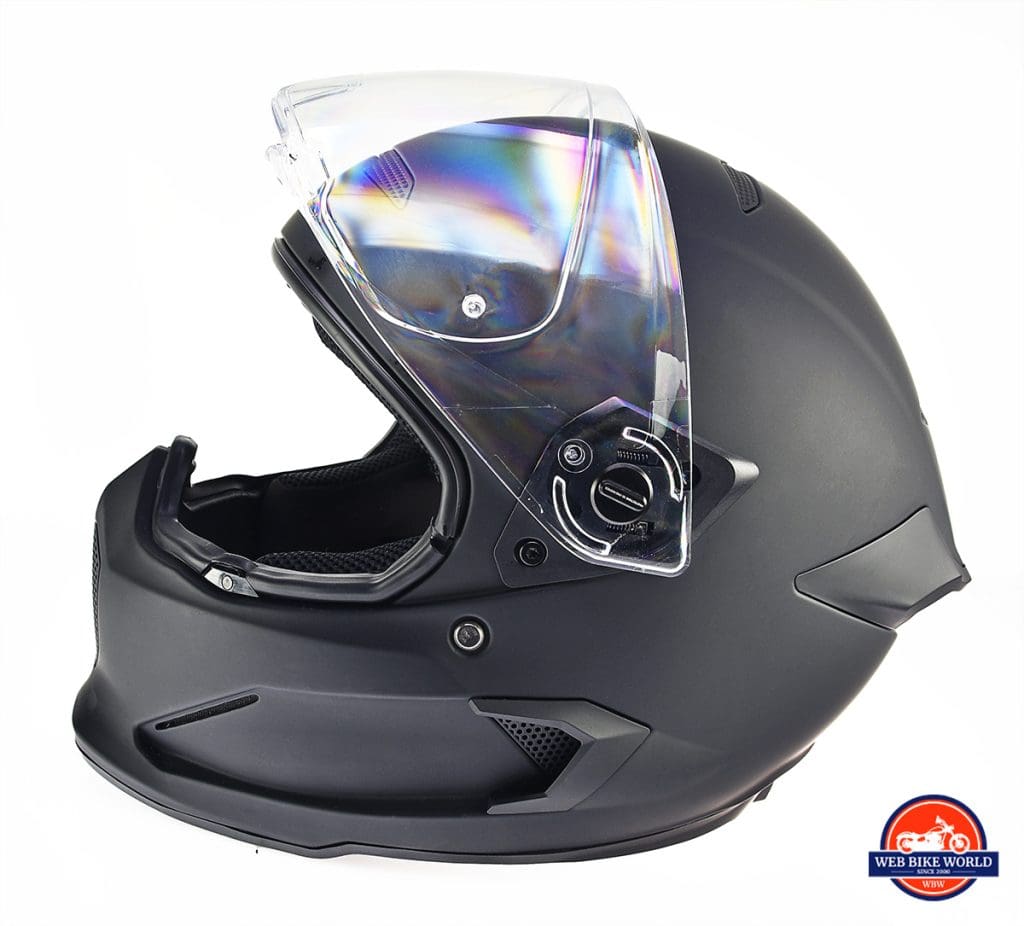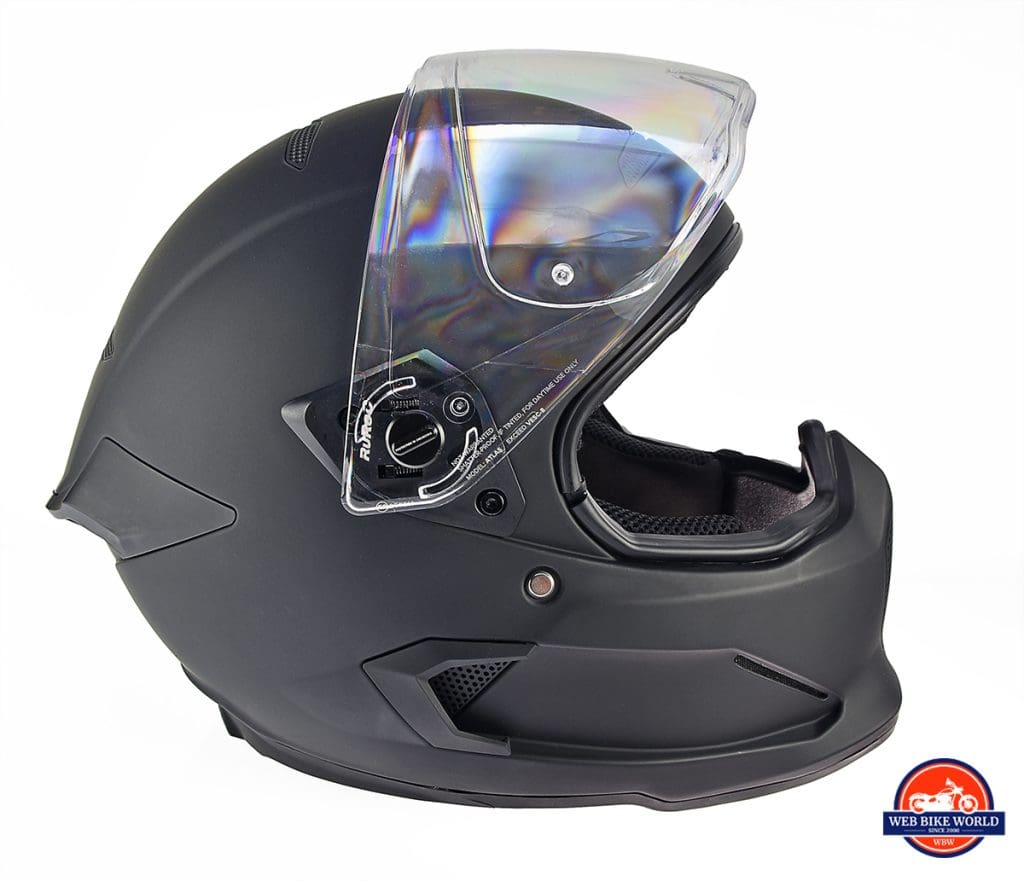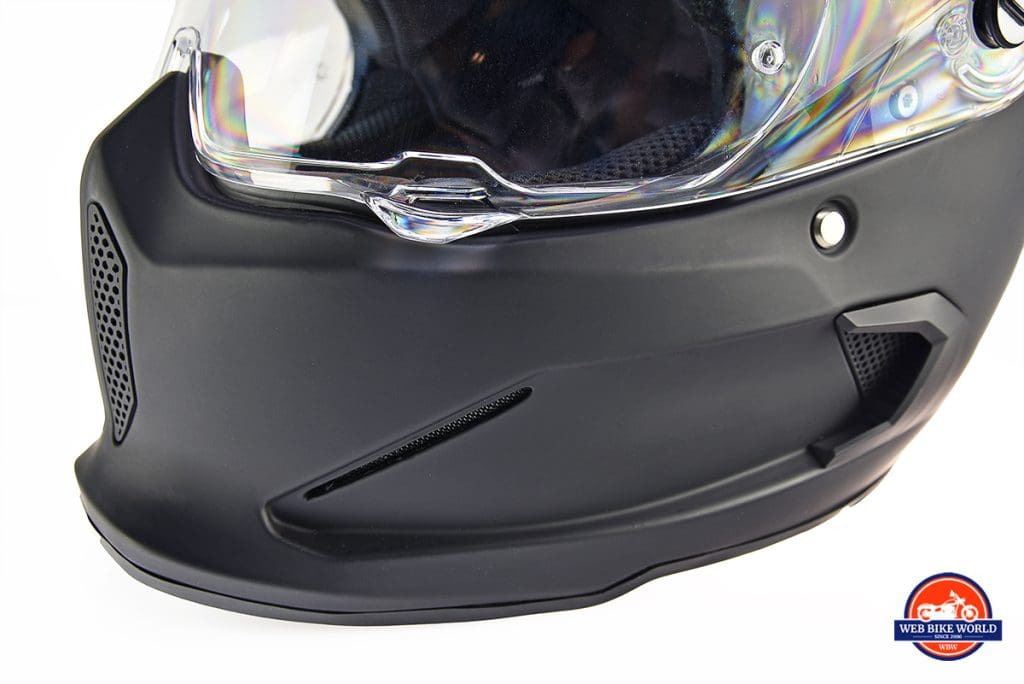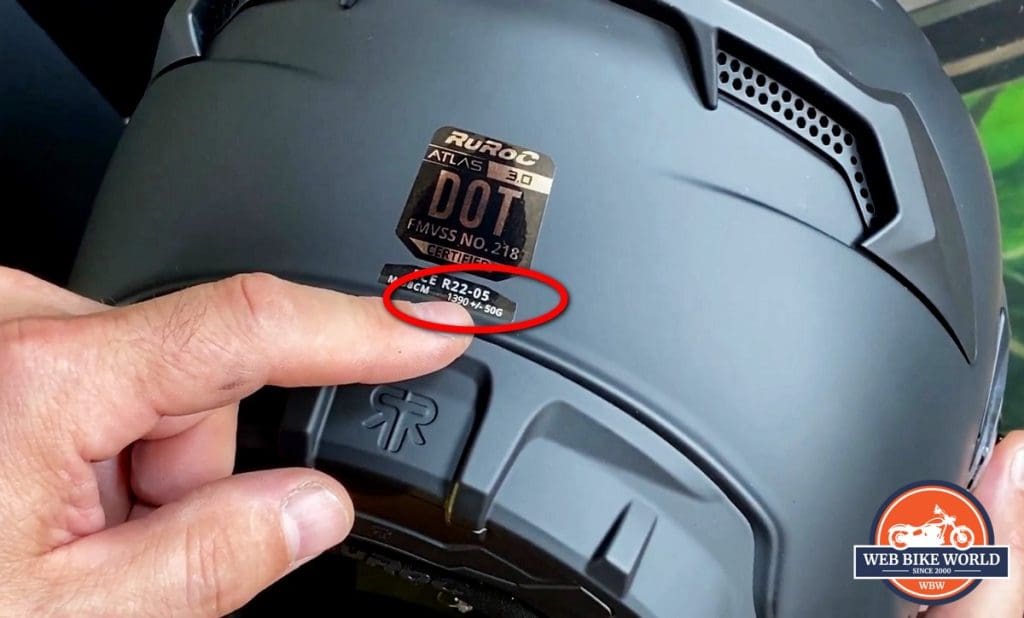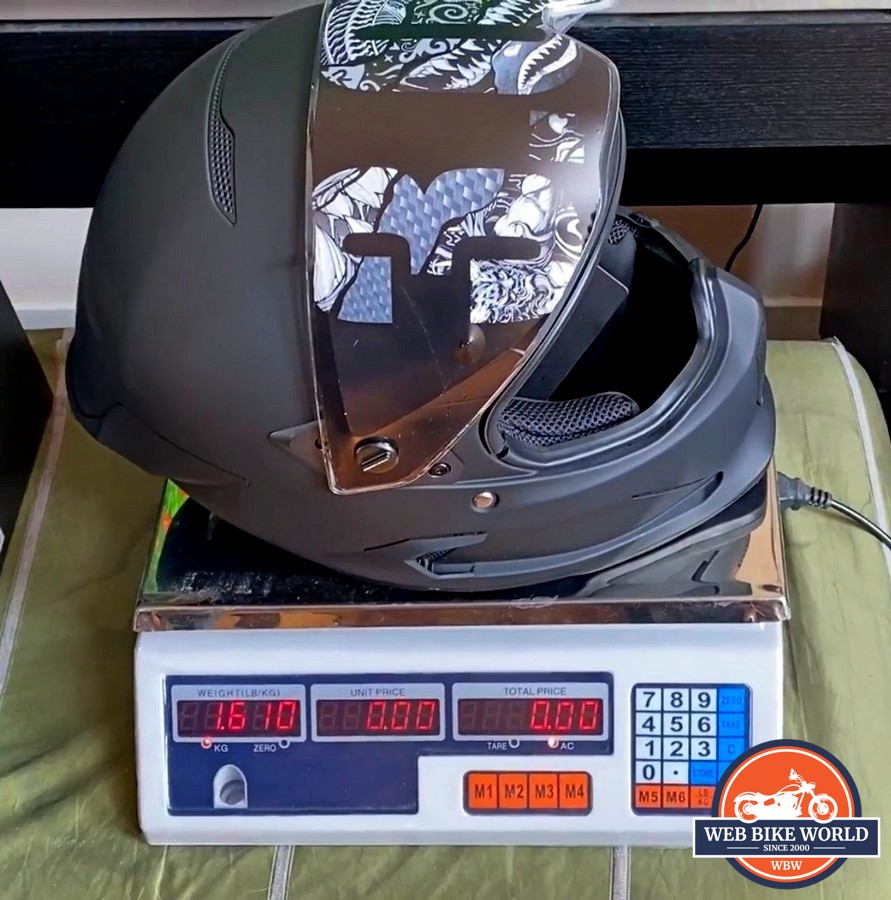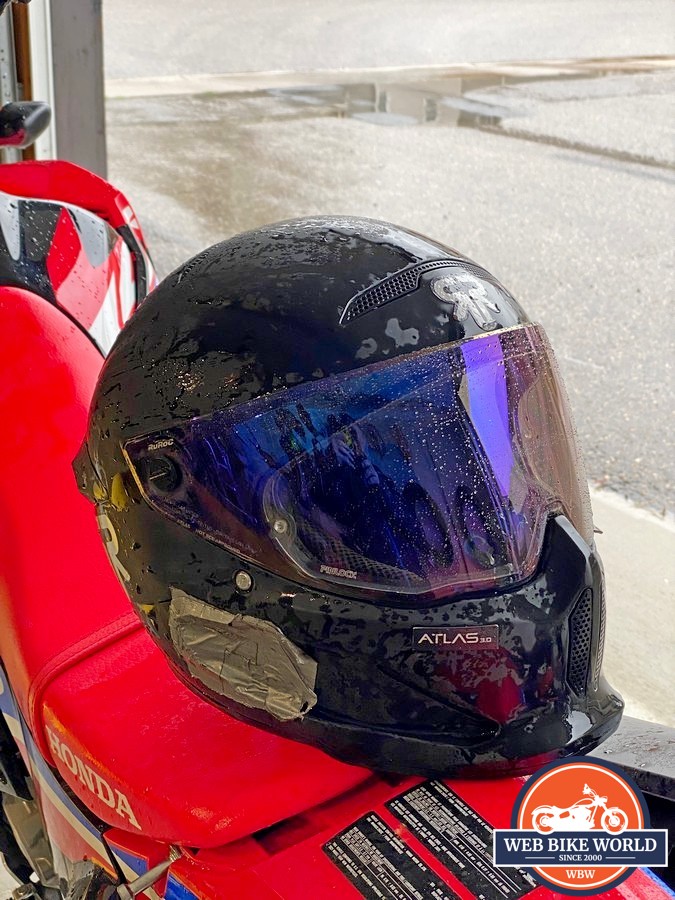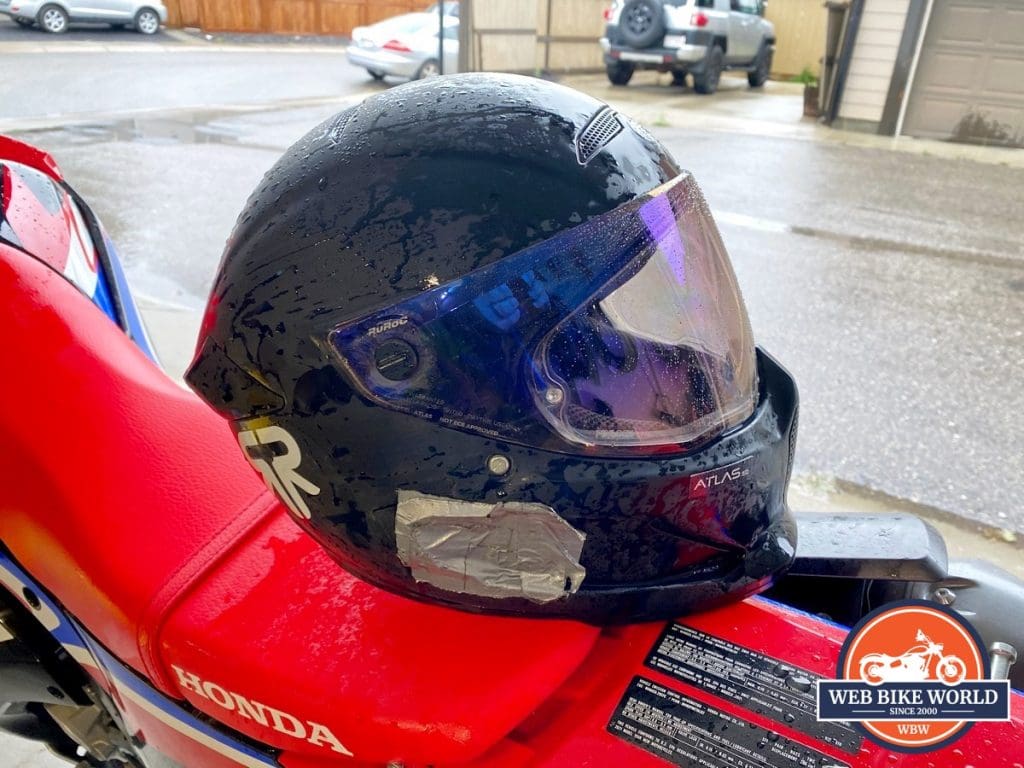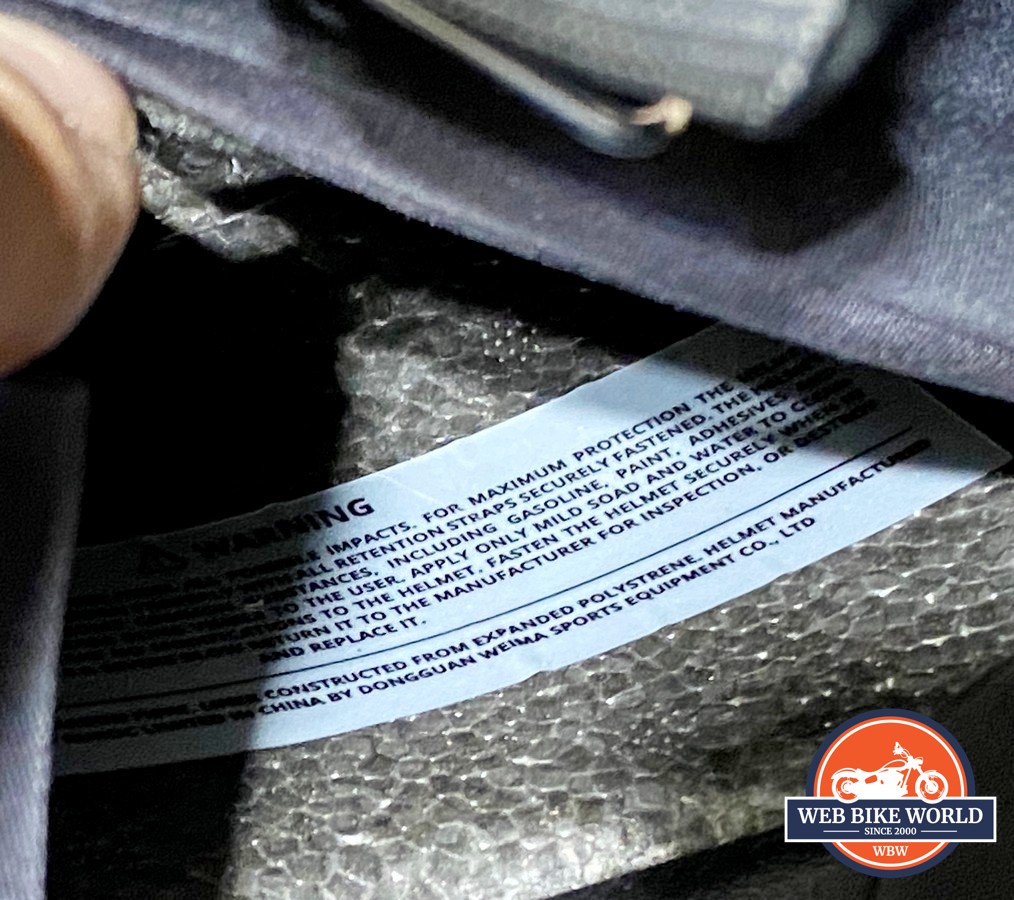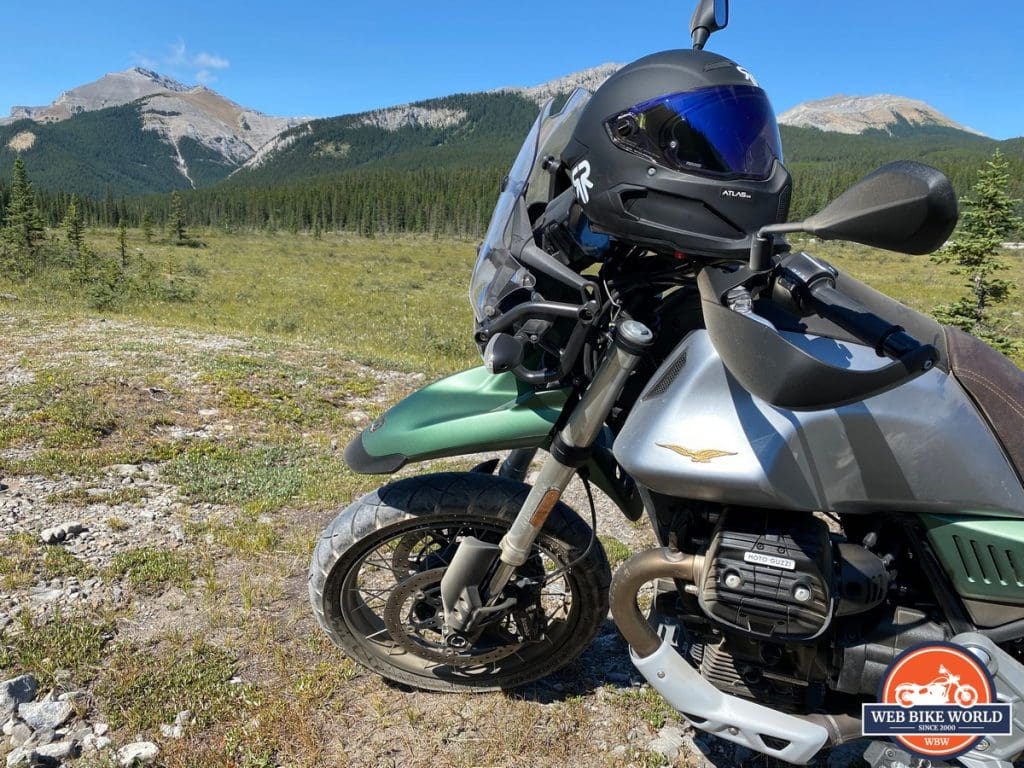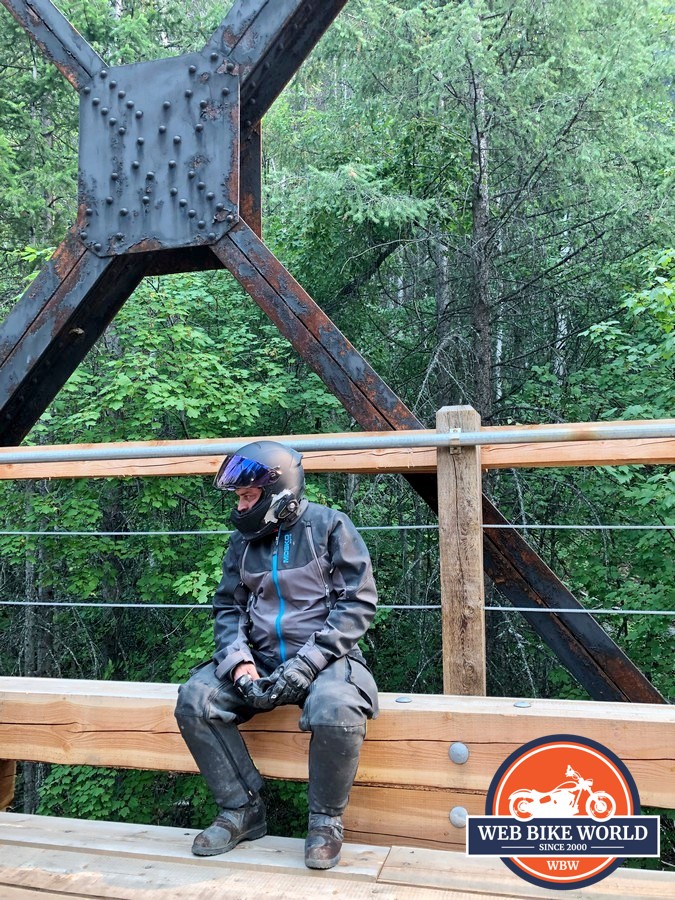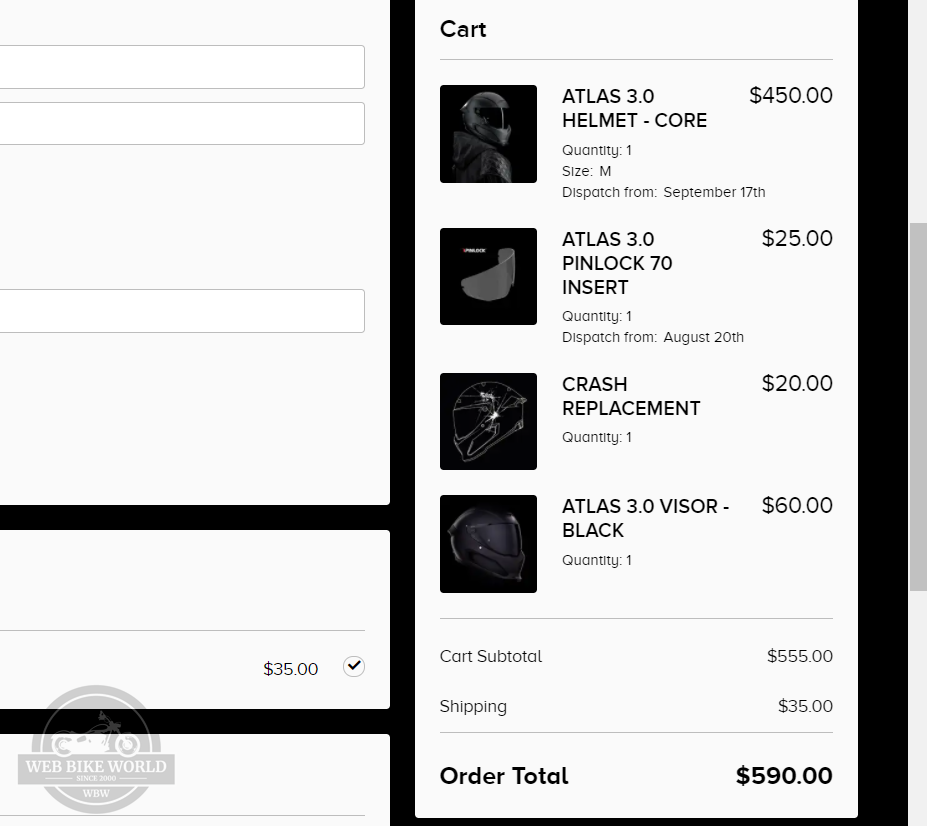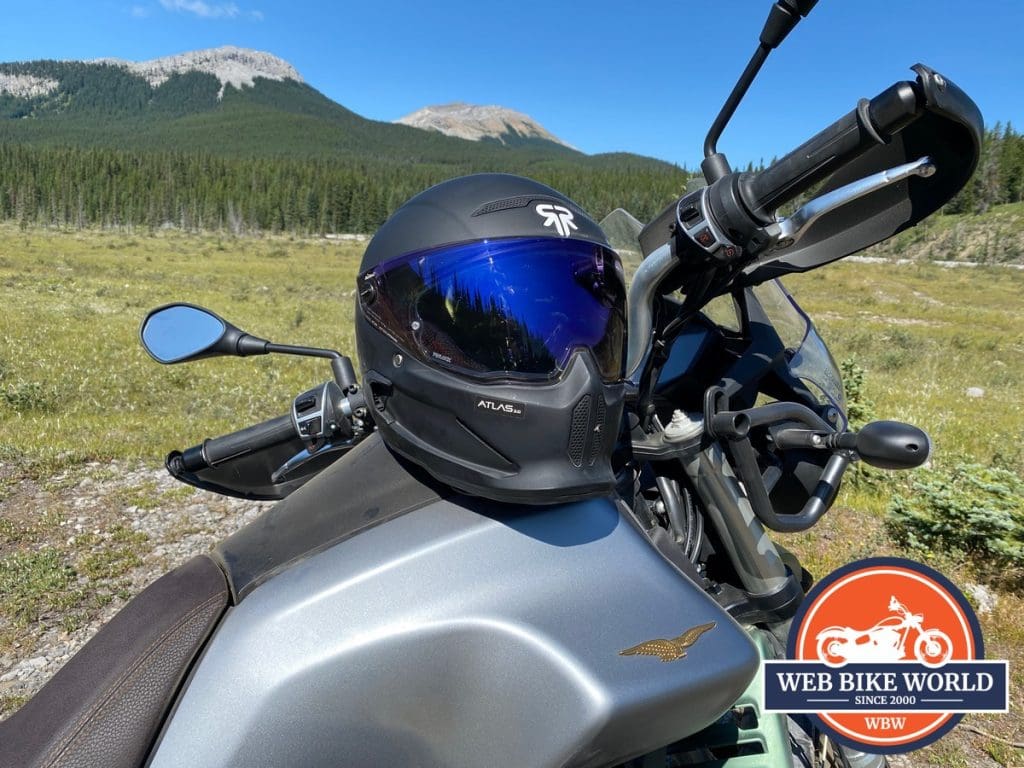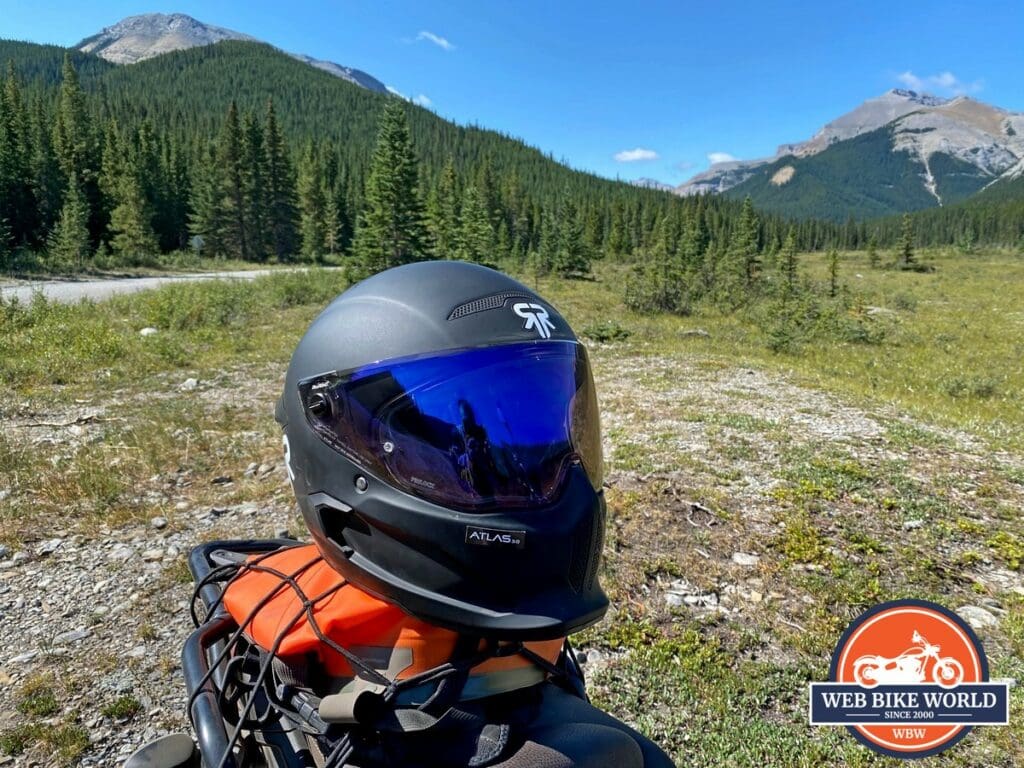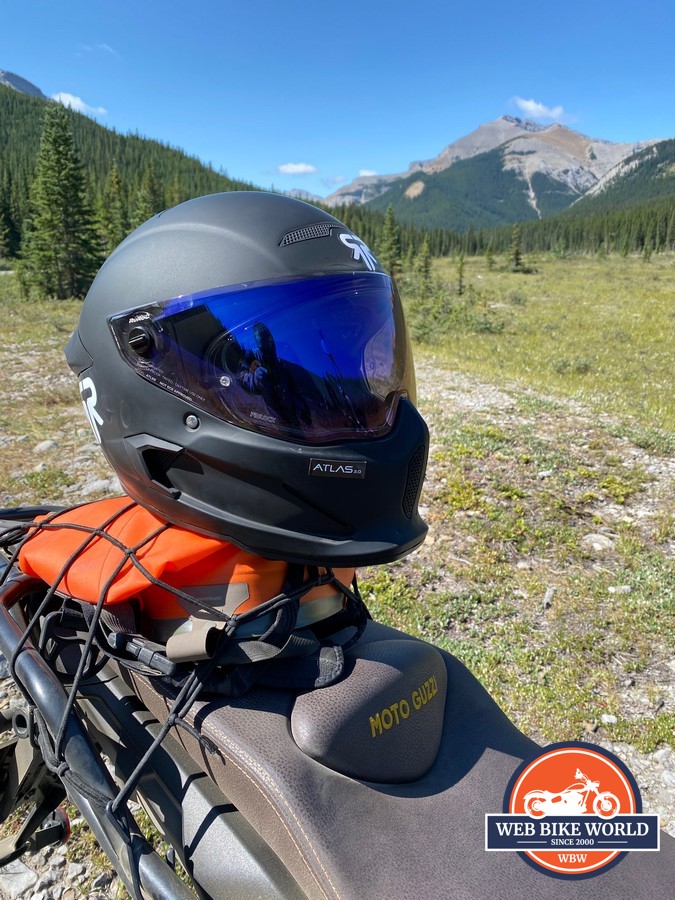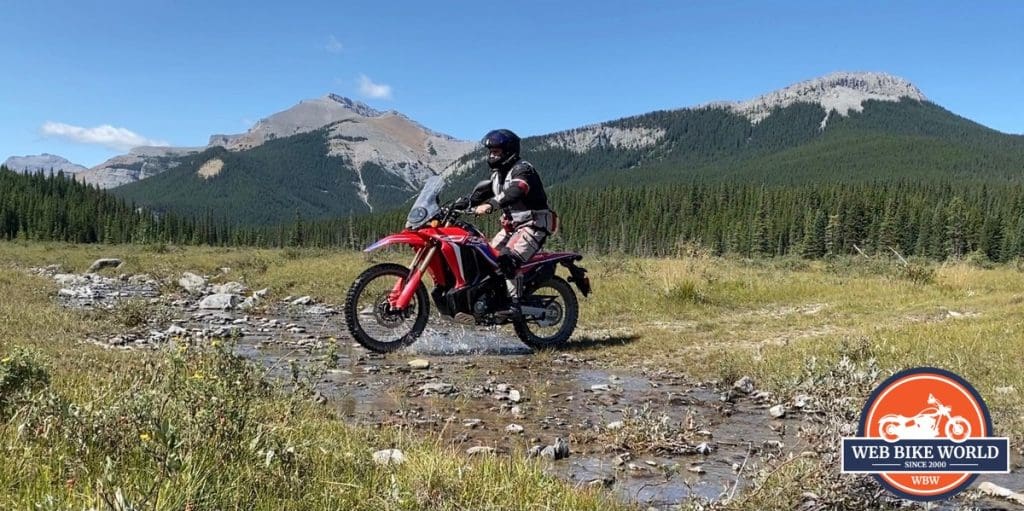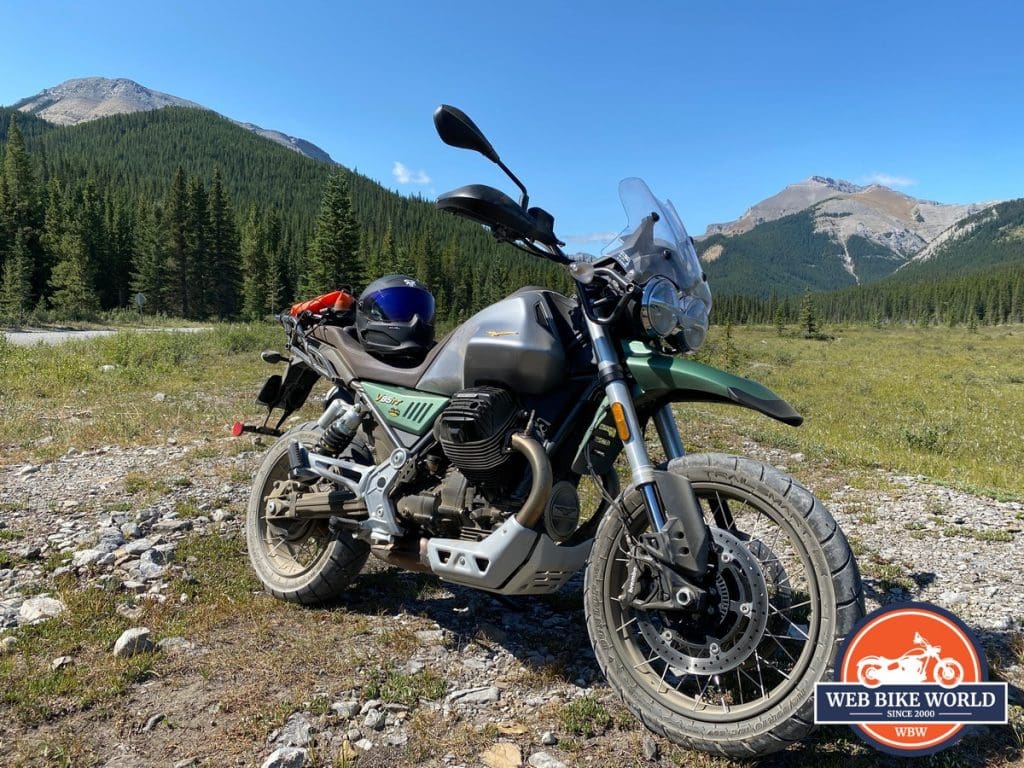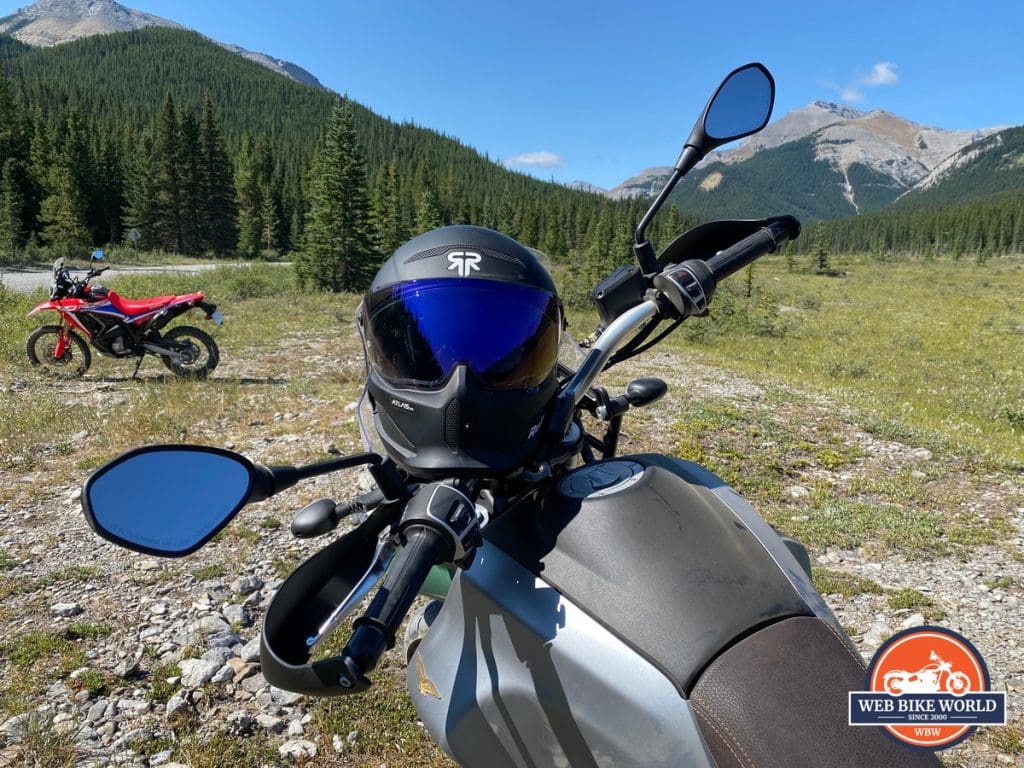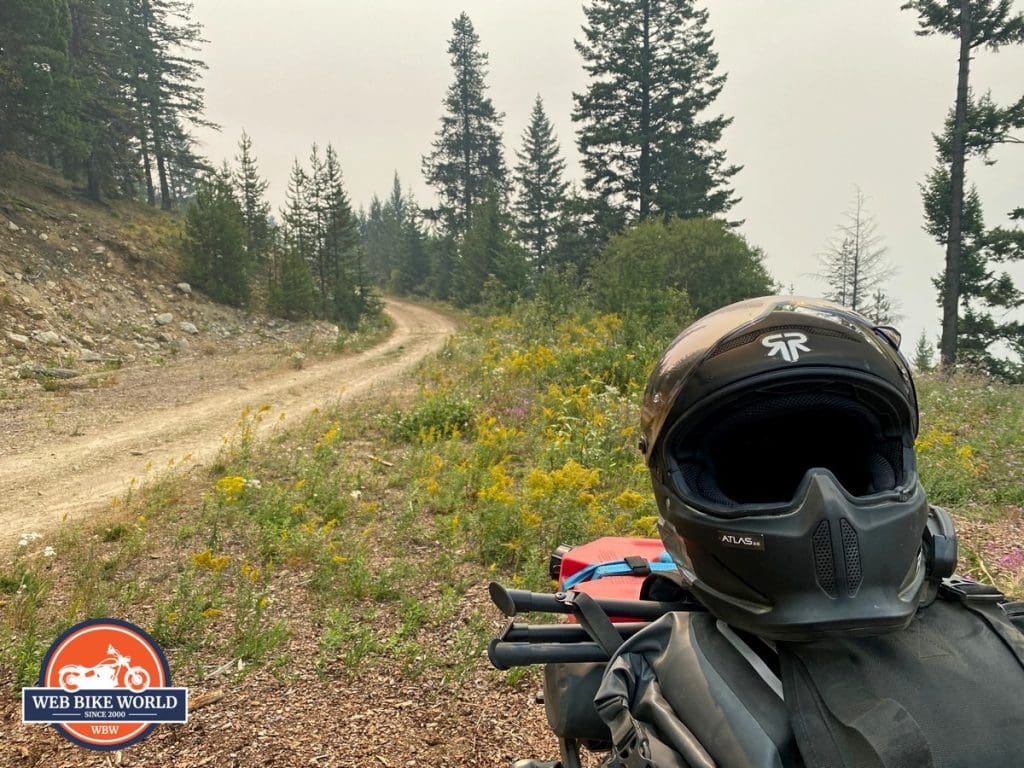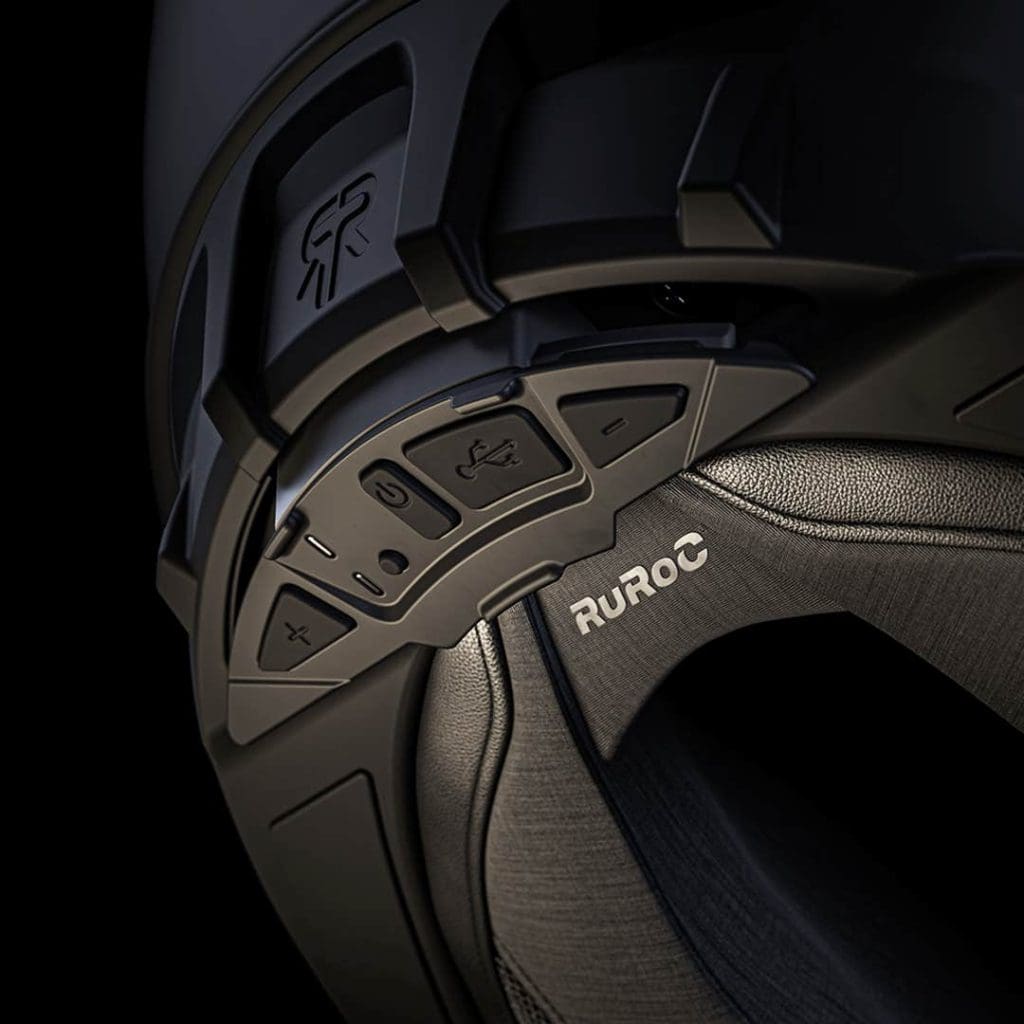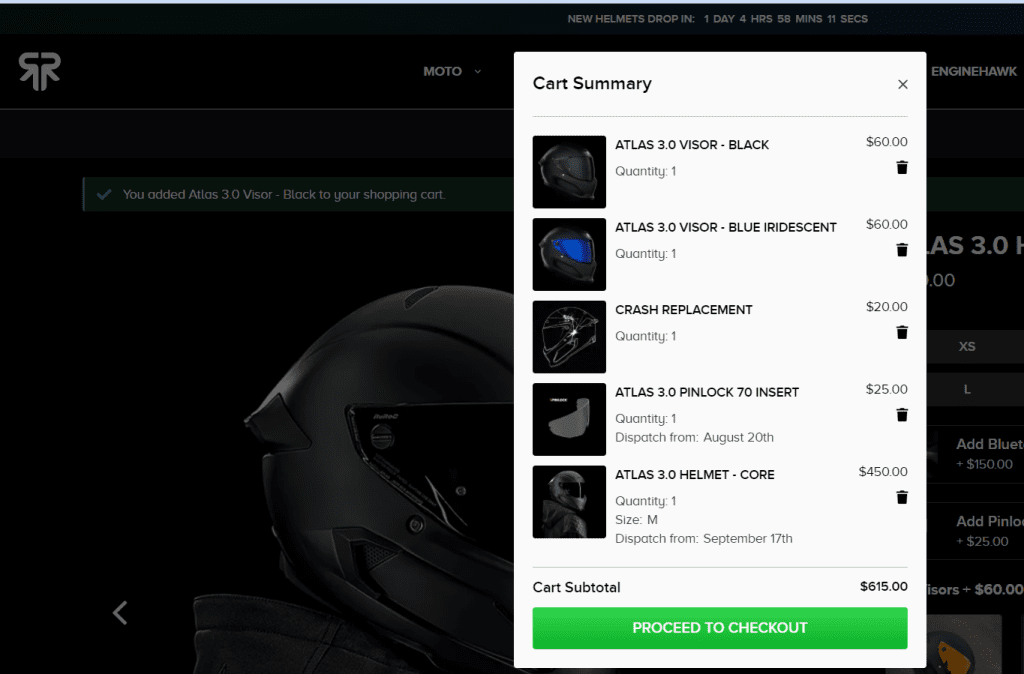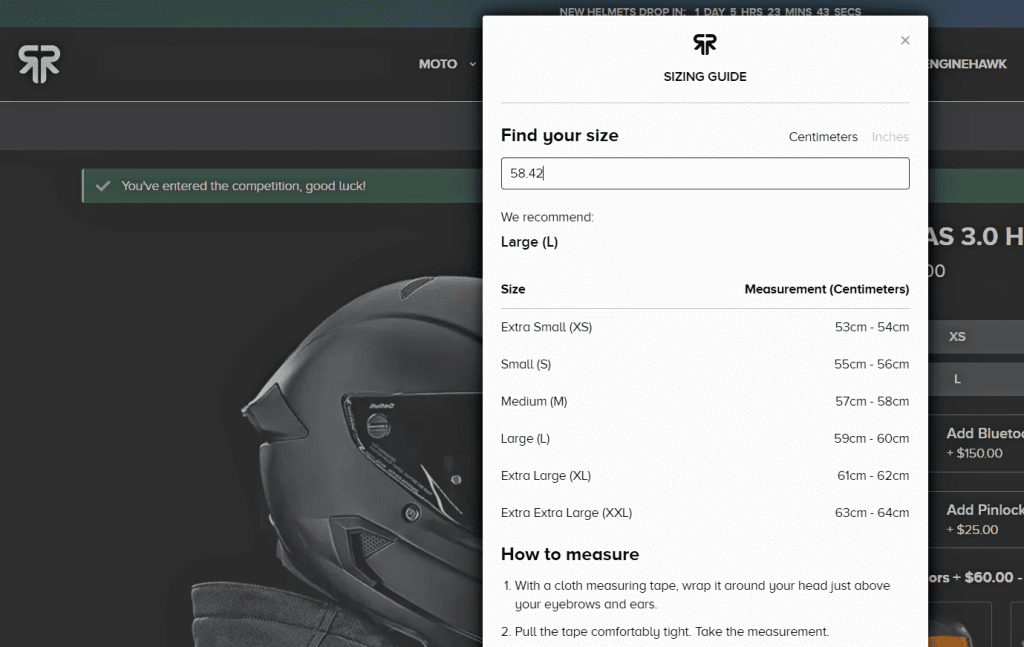Ruroc Must Mean Relentless
In 2019, Ruroc expanded their business into the motorcycle helmet scene, their confidence buoyed by their success previously in designing and selling snowsports headgear. Over the last two years, this ambitious company has already revamped that original Atlas helmet design twice in their quest to become the top name in the motorcycle helmet game.
This is unheard of in the motorcycle helmet industry. I can’t name another brand willing to shoulder the expense of changing their helmet design every year. Based on what my contacts at Klim told me, creating a new mold for a helmet shell at a factory can cost anywhere from $75,000 to $120,000 US or more.
It’s Not Just Helmets
On top of the helmets, Ruroc spawned Enginehawk as a separate entity to craft motorcycle riding jackets. Their level of enthusiasm for motorcycling gear is off the charts and got my attention from the onset.
Finally, I Got One To Review
For the last two years, I’ve been harassing Ruroc representatives to send me a helmet to review. At last, I received an Atlas 3.0 from them at no charge for that exact purpose, and I’d like to thank them for the opportunity.
Want a legitimately unbiased, honest, and fair estimation of the Atlas 3.0? Here it is.
Did I Go Too Far?
I doubt anyone has ever tested this helmet more than I have, or at least to the extent that I have. I aimed to find the performance limits of the Atlas 3.0; to do that, I decided to test it both on and off-road.
I’m an adventure rider and used the helmet in all manner of weather (rain, sun, cloud) and in temperatures ranging from a low of 8 Celsius (46 Fahrenheit) to a high of 38 Celsius (100 Fahrenheit) over 1300 miles (2100kms) ridden.
Atlas 3.0 Helmet Design, Fitment, & Shape
Right out of the box, I was struck with a few things about the Atlas 3. Specifically the compact size, low mass, attention to artistry, and solid build quality. It looks and feels good in my hands.
Aesthetics
The Ruroc logo can be found as often on the inside of this helmet as on the outside, although several branding stickers came with it that I applied liberally to the exterior to jazz up this Core model’s rather spartan exterior.
Ruroc has a total of 18 colorways/graphic packages (including a new Batman and Joker theme) to choose from for the Atlas 3.0 if you don’t care for the low-key look of the Core model.
The overall shape and look of this helmet lands somewhere between fighter jet pilot and Moto GP racer thanks to the fin at the back and scoops on the sides.
It reminds me of the Bell Rogue and Scorpion Covert due to the tall chin bar, but the Atlas is far superior to those helmets when it comes to rider protection. The Atlas is unique in appearance and stands out amongst any crowd. Full marks to Ruroc for imbuing the Atlas 3 with individuality and style.
The Safety Factor
The Atlas 3 comes DOT and ECE 22-05 certified which gets a thumbs up from me. I always favor dual-certification in helmets and three or more homologations is better yet.
The outer shell is crafted from T300 carbon fiber, although you wouldn’t know it because the weave is covered entirely by a grippy, rubber coating that is robust and scratch-resistant.
T300 is the most commonly used grade of carbon fiber at the consumer level of the helmet industry because it does an adequate job of protecting the wearer but doesn’t break the bank as other stronger grades like the T800 level will. Here’s a page to explain how all that works if you’d like to know more.
I wasn’t able to accidentally damage the outer layer during my testing despite the fact many times the Atlas was set down on gravel and dirt. I had to drag a sharp screwdriver tip along the surface to punch through it and thusly satisfy my curiosity of what level of abuse it would shake off. There’s a layer of white coating behind the black, so if you do manage to get through it somehow, there’ll be an ugly and visible bright white blemish to stare at.
The Egg Shape
Ruroc likely built this helmet shell in an egg shape because it’s consistently proven as one of the strongest. If you don’t believe me, ask Arai why they continue using their R75 shell shape even after 60 years of helmet development.
Ruroc could do worse than emulating an Arai design, without a doubt.
SHARP Testing
I was hoping to find that SHARP had tested the Atlas 3.0 or even one of the previous models, but they haven’t yet. My unsubstantiated gut feeling based on how it compares physically to other helmets I’ve worn and the way it feels in my hands/on my head is that the Atlas 3 would protect well in most crashes.
***Update October 2021***
SHARP just released a report on the results of testing the Atlas 2.0. It managed a 4 out of 5 stars score! It appears SHARP testing has backed up my gut feeling about the build quality of Atlas helmets (in a crash anyway). The Atlas 3.0 should perform just as well or maybe better because of the third shell size added.
Ruroc Testing
Ruroc claims to have its own special brand of visor testing to go with the usual DOT and ECE testing regimen. You can read about it on the Ruroc page and watch several videos about the process.
When it comes to actual impact testing of the shell, they highlight averaging 171 Gs of force measured, which is lower than the 275 G standard. If that’s true, this helmet is a very good performer relative to other helmets on the market.
I would very much like to see Ruroc pursue a Snell and FIM homologation to get more independent proof of the Atlas 3’s crash-worthiness in addition to a SHARP report.
Fitment
My 23” circumference (58.42cm), Round-Oval-shaped head usually complicates choosing the correct helmet size. Often I land right between a Medium and Large, thus creating a sizing conflict. That was the case with the Atlas 3.0, as you can see from the sizing chart in the photo below.
The Ruroc website recommended I get a Large, but my contact at Ruroc sent me a Medium based upon the sizing information I sent him. That was the right choice, but if your head is any larger than mine, I would recommend ordering a Large.
Head Shape
Ruroc describes this helmet as Intermediate Oval (the internal shape). I class it a neutral-biased IO shape (slightly round) because I’m very comfortable wearing it. I don’t feel any pressure points anywhere on the sides of my slightly wider than normal, Round Oval head.
If you have a longer, narrow-shaped head, I suspect you’ll feel pressure in front or back or that it’s a bit loose on the sides. I’m not aware of any thicker or thinner cheek or crown liners being available for the Atlas 3.0 to adapt the fit, unfortunately. That’s something Ruroc should offer if they don’t already unbeknownst to me.
Narrow Neck Roll Opening
My wide head is a bit of a chore to get through the neck roll opening on the Atlas 3.0 because of how narrow it is.
I’ve heard of at least one other reviewer complaining about it and claiming to have cut their ear due to contact with something… possibly the edge of the shell.
I suspect the true culprit was the FIDLOCK chinstrap closure which is made of aluminum and has sharp edges. When you pull this helmet on it’s important to grip the chinstrap and pull it outwards to avoid having the clasp contact your cheek or ears. I scraped my left cheek a couple of times when I didn’t take enough care putting the helmet on.
3 Shell Sizes
One big improvement over the older Atlas 2.0 was the addition of a separate third shell for the Medium-sized Atlas 3.0.
Many other manufacturers only provide two shell sizes which can lead to some buyers having to endure a bobblehead sensation caused by an unnecessarily bulbous helmet shell.
That’s not the case at all with the Atlas 3.0. I notice a lower center of gravity while wearing it that I normally associate most with Shoei and Arai helmets. The Atlas 3.0 in general fits close to my face all around and feels smaller and more compact than many other helmets I’ve worn.
Claustrophobic people should probably pick a different lid for that same reason.
Bravo Ruroc! That extra shell is proof of their desire to go above and beyond what even a high-end manufacturer like Schuberth is willing to offer. Schuberth only offers two shell sizes for the C4 Pro as an example.
Weight
If you watch the unboxing video above you’ll notice the sticker on the back of the helmet shows the weight at 1390 grams +/- 50 grams while my scale rings it up at 1610 grams (3.55 lbs).
That was confusing until I saw on the Ruroc website the upper range for the Atlas 3.0 is 1600 grams +/- 50 grams. I guess they only felt the need to print the lowest possible weight on the back of the helmet? Weird.
Regardless this is a pleasantly lightweight helmet to wear on your noggin. No, it’s not the lightest carbon fiber helmet I’ve ever worn, but the weight feels centered low in the shell making those extra 0.55 lbs unnoticeable for me.
Interior
The interior comfort liner is soft foam covered by a polyamide/polyester weave that feels smooth and slightly cool to the touch.
It routed sweat away from my head and face effectively in higher temperatures, but I was warm in cooler ones as well. It’s the industry standard antimicrobial, washable material we’ve all come to expect and doesn’t smell funky after absorbing dirt, dust, and grime even while out riding off-road as I did.
Well done one again, Ruroc!
Chinstrap
The chinstrap on this helmet has a large piece of foam used to cushion the wearer’s face from the rough nylon retaining strap. The padding on the right side is about an inch too long for my head, and I find it can get in the way of fastening the FIDLOCK mechanism. It’s a minor inconvenience though.
FIDLOCK
I first became acquainted with the FIDLOCK chinstrap closure when I reviewed the Klim Krios Pro. The FIDLOCK is wonderfully quick and convenient for putting a helmet on or taking it off, and I find the design to be pure genius.
I reached out to FIDLOCK during the Krios Pro review for more information on their product and came away confident with the quality of build and safety capabilities of this mechanism. My opinion hasn’t changed in regards to the longevity of this magnetic closure, its resistance to heat, or its ability to withstand almost 500lbs of pulling force.
No medical experts or safety watchdogs have reported problems or raised dire warnings about the FIDLOCK chinstrap that I’ve found.
The Luddite Mentality
Recently Ryan F9 criticized every chin strap closure other than the double D ring one because “none of them are worth wearing if the closure fails before the nylon chin strap does.”
To that, I would say if there’s 500+lbs of sustained force working on my helmet’s chin strap, I would prefer it to fail instead of holding fast and breaking my neck and/or tearing my head off.
I do agree with him saying there’s a bit more work involved in adjusting the length of the FIDLOCK chin strap, but once you’ve set it up, you can forget it until you gain or lose weight.
To each their own, I suppose, but I find at times Ryan favors oversimplifying complex issues and prioritizes being provocative ahead of informative. He seems to hold his own opinions higher than those of real experts, which is arrogant and irresponsible from a journalistic point of view… but then again, he isn’t a journalist. He’s merely a commentator/critic.
Atlas 3.0 Visor and Field of View
Looking out of the eyeport of this helmet, I can see everything perfectly in my field of view, including in the all-important periphery.
My only gripe is that I can’t see downward satisfactorily because of the tall chin bar and the taller portion in the center in front of my nose. It makes getting my wallet or keys out of a jacket pocket a “feel and find” experience because I don’t have a line of sight. I have the same issue while wearing my Arai DT-X, and yet it’s still my favorite full-face helmet to wear.
Of all the attributes the Atlas 3.0 boasts, I admit the quality of the visor surprised me most of all. It’s downright lovely! Ruroc spent some time working on getting this right. The edges of it are tapered to help cut down on wind deflection as it flows over the visor and I think it also helps seal out water and dust. More on that later.
Three Visors To Choose From
Ruroc sent me two extra visors (one blue iridescent, one black) along with the clear one that comes standard with the helmet. When you order the helmet, they offer a 20% rebate if you order three extra visors or more, which is good value.
Bug Guts Didn’t Faze It.
I decided to install the blue iridescent visor for my testing because I suspected the rainbow finish on it might be the most susceptible to scratches. Also, since the Atlas 3 doesn’t have an internal sun visor, I wanted some form of shielding from bright sunlight without resorting to sunglasses.
The clarity of the visor is on par with the best of the competitors I’ve used, and wiping the dust, bug guts and other debris off it with my gloved hand or wet paper towels out of necessity never produced any damage to the surface.
Pinlock Not Included
When you purchase the Atlas 3, it doesn’t come with the Pinlock anti-fog lens, but you can add it for an additional $25 US. I would recommend doing that because I found the visor would fog up while riding in the rain but only in a small area at the bottom of the visor where the Pinlock didn’t cover.
Without the Pinlock, I think the whole thing would have been a foggy mess.
Quick Release Mechanism
The visor is easily removed and re-installed using the metal retainers (Ruroc calls them “bayonets”?) located on either side by the hinges. They only need to be turned 90 degrees before releasing and pulling out of the receptacles. The visor pops right off once they’re removed, and installation is the reverse. See the video below.
The Klim Krios Pro has a similar quick-release visor system, but their locking retainers are made out of plastic, and I found they jam if I ride in very dusty conditions for too long. The metal ones on the Atlas 3 always seem to release easily, even after riding in the dust.
That may not sound impressive until you realize the Krios Pro was (in theory) designed to be an adventure helmet while the Atlas 3 wasn’t! The way the Atlas 3 performed so well off-road is, in my mind, akin to finding a Honda Civic that can compete in the Dakar Rally.
Visor Adjustments
The visor has seven detented positions, including the just-barely-cracked-open one that I always look for.
The action on the visor is pleasantly smooth and easy to move with one hand using the lip that sticks out of the left side.
After riding for two days in dusty off-road conditions, I found the visor hinges began stiffening up, so I removed the visor and sprayed cleaner into the hinges to remove the built-up dust. Everything moved freely again after that spritzing.
Atlas 3.0 Helmet Ventilation
Up to this point, the Atlas 3.0 has scored higher than I anticipated it would, but the next two areas separate average helmets from exceptional ones: ventilation and road noise.
The Upper Vents
The upper vents are uncontrolled because there aren’t any switches for them anywhere. Ruroc sells a set of rubber plugs for the upper vents should you like to close them off though.
The only option I found to increase airflow through them was to tip my head forward into a racing tuck, and even then, I found the flow to be uneven. This may have been caused by the upper crown liner being slightly out of position and blocking the inlet on the right side, but I’m not certain.
I would rate the cooling ability of the upper vents below average, but it’s not entirely ineffective, at least.
The Chin Bar Vent
Conversely, the lower vent does have a three-position switch to control airflow, but it’s located on the inside of the chin bar, where it’s difficult to actuate while wearing the helmet. For that reason, I left it wide open throughout the entire testing period.
The air coming in is slightly above average and hits right around my mouth and nose where I want it. Some airflow also gets pointed upwards at the visor to prevent fogging.
I appreciate how the air doesn’t get directed at my eyes, and I would rate the chin bar ventilation above average.
The Atlas 3.0 Out On The Road
Helmet reviews that don’t include plenty of time in the saddle have limited value, so I go out of my way to pile on the miles when reviewing any kind of riding gear. This one crossed the line into the territory of extreme, but in my mind, that’s a bonus.
Road Noise
This is the area most people wanted to hear about because previous versions of this helmet have been labeled very loud. In my experience, most carbon fiber helmets typically are noisy, so I wasn’t holding out much hope for the Atlas 3.0.
Noisy Side Vents
When I test helmets for noise, I stand up on the footpegs of my motorcycle to get my head into free-flowing air coming at me. This ensures I eliminate any turbulence caused by the motorcycle fairing and windshield from the experiment. I’m always surprised when riders or even other reviewers fail to realize this has a significant effect on the results.
When the Atlas 3.0 is in a free-flowing airstream, it’s acceptably quiet. I would rate it about average in that regard. So if you ride a naked sportbike or some other, that doesn’t have a windshield to disturb the incoming air, you’ll likely appreciate it a lot.
But…
When I sit down on the seat of my KTM 790 adventure and this helmet sits in the turbulent air coming off the bike’s fairing, it’s very noisy, unfortunately.
On each side of the chin bar, you’ll notice the massive scoops that run back below the hinges of the visor, where they terminate at intake vents. The sharp edges on those orifices are the source of the loud crackling noise I hear at highway speed. It’s awful and sounds like loud static on a TV set inside the helmet.
I figured out how to get rid of it completely by placing duct tape over the orifices on each side. Once I did that, I enjoyed wearing the Atlas 3 at any speed even while seated.
Dear Ruroc helmet designers— PLEASE get rid of these vents on the next Atlas model and you’ll have a top-shelf helmet!
Ear Plugs
Having said that, I know many riders always wear earplugs when they ride and those people probably won’t care at all about this wind noise, eh?
I chose to remove a sizable amount of design points from the scoring for the failure of Ruroc to address this problem. Surely after three generations of Atlas, they know about it, and I take their inaction to mean they’re stubbornly placing the cool look of the scoops above building a quiet helmet.
Rain Riding
I wore the helmet in heavy rain for about an hour and didn’t notice any leakage through the visor seal.
This is most impressive to me because, to this point, it’s the only helmet I’ve tested that hasn’t leaked while riding in the rain other than my Arai XD-4 and Arai DT-X.
I did notice the occasional drop of water coming through the chin bar vent, but nothing of any real significance.
Well done again, Ruroc!
Lift and Pull
This helmet shell’s mostly smooth shell keeps lift and pull in crosswinds to the barest of minimums. What a treat compared to the adventure helmets I usually wear sporting elongated chin bars and sun peaks that naturally catch even the slightest wind gust thus threatening to wrench my neck.
The Atlas 3.0 is calm, cool, and collected at any speed, thanks to its streamlined shape.
Atlas 3.0 Bluetooth Communicator Integration
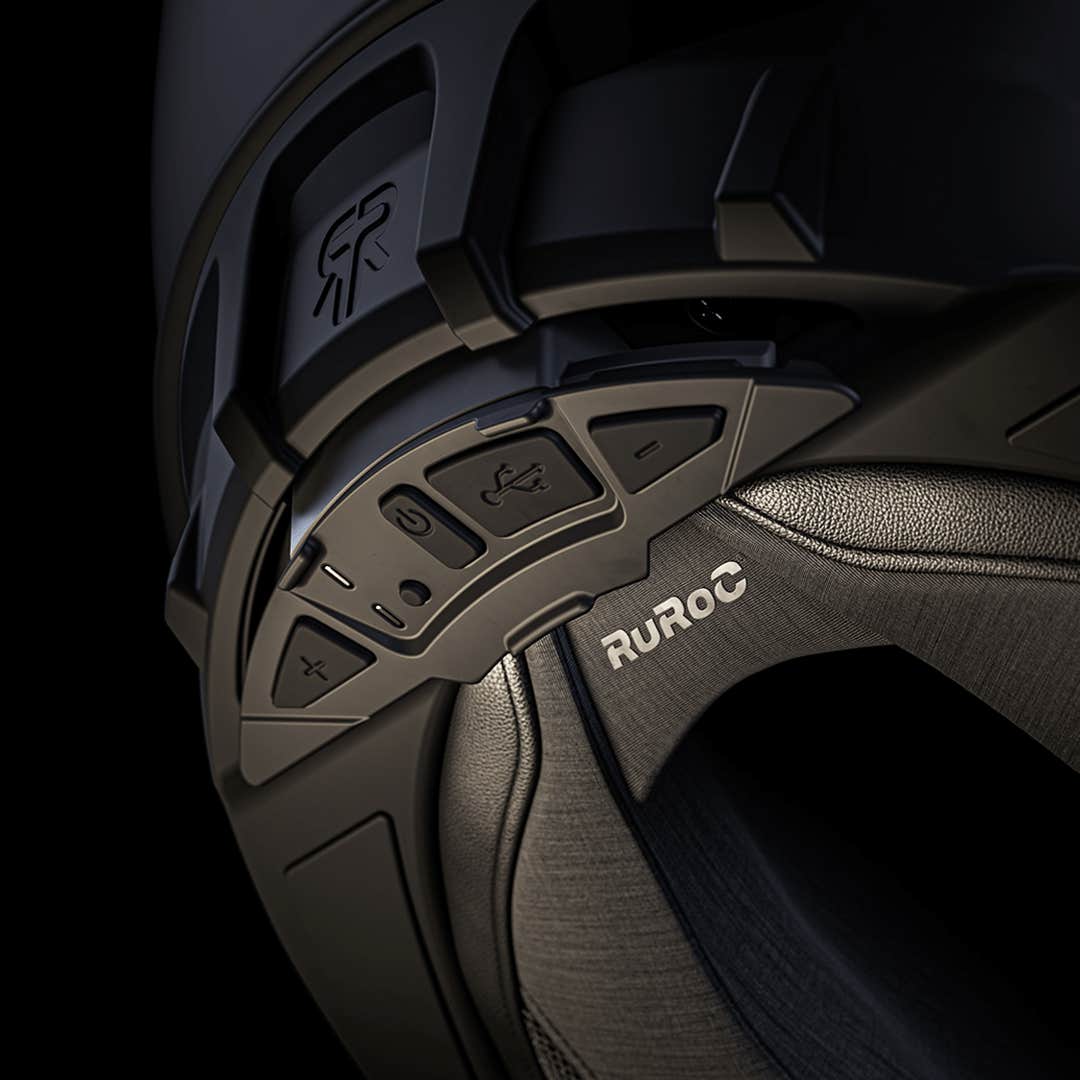
This helmet was designed specifically to house the fully integrated Shockwave Bluetooth system. It only costs $150 US, which is acceptably affordable compared to most Sena and Cardo units on the market but doesn’t have all the features of those more expensive systems.
Ruroc didn’t send me the Shockwave unit to review, but I recently bought the Type B HD Sena speakers to upgrade my Sena 30K communicator and decided to see whether I could install it in the Atlas 3.0.
No Problem
My Sena 30K clamped onto the Atlas 3 without any issues and the speakers fit in the 40mm pockets perfectly. There’s a small patch of velcro on the inside of the chin bar intended for the Shockwave mic where I attached the Sena microphone instead, although it’s not the most ideal placement for picking up my voice when I speak.
I attempted to install the mic closer to the middle of the chin bar interior, but I can’t get anything to stick to the odd material Ruroc uses as a liner. It’s almost like Teflon!
What a sound upgrade these new HD speakers are, by the way. Bruce Cole’s wBW review was bang on, and they’ve brought new life to my 30K, which has been on the sidelines for a while.
My success installing the Sena 30K in the Atlas 3 tells me I could very likely install any other Cardo or UClear, etc., system in it as well.
Ruroc Atlas 3.0: Got Hi-Viz and Reflective Materials?
The Atlas 3.0 comes up empty in the high visibility and light-reflective category, but so do the majority of helmets I review.
I can’t figure out why manufacturers don’t include reflective decals, piping, or patches at least somewhere on all the helmets they build. An ounce of prevention is way more valuable than a pound of protection.
Final Verdict
It frustrates me so much to see a helmet like this displaying so much potential yet falling short thanks to a couple of notable flaws.
On the other hand, that also means Ruroc is close to producing an exceptional piece of gear if they take my constructive criticism to heart and act on it.
At this point, I feel torn about the Atlas 3.0. I’m unwilling to fully recommend buying it until Ruroc polishes this rough diamond a bit more and yet I keep finding myself wearing it! How weird is that?
It’s similar to my opinion of the Shark Spartan GT Replikan because it’s another great helmet saddled with a notable flaw. The visor fogs up a lot even with a Pinlock installed –in case you’re wondering.
Again I’m begging the Ruroc designers to please eliminate the noisy vents, then improve the upper ventilation, and I will wholeheartedly endorse it as a desirable piece of kit.
Dollars and Sense
Let’s look at some numbers and comparables for a moment because people who aren’t affected by the wind noise still might want to buy this Ruroc helmet.
This $450 US helmet provides decent value overall, but when compared to others in that price range it might not offer enough. I looked on Revzilla’s website for currently listed comparables, and there are a number of other strong contenders that might get the nod over the Atlas 3.0.
Have a look at the $399 Scorpion EXO-ST1400 that scored very high in Brandon’s wBW review, the LS2 Challenger GT Carbon (if you’re a Long Oval head shape), the Nexx X.WST2 Carbon, and the $430 HJC F70 Carbon just to name a few strong options.
Adding the $25 Pinlock and $20 crash protection to the Atlas 3 still keeps the price under $500 US but some of the aforementioned competitors already include a Pinlock for less money.
The Ruroc crash protection option allows a buyer to replace their Atlas 3 for half the price of new should they have an accident and need a new helmet. However, from what I know, most insurance companies will cover the full cost of a replacement helmet as a part of a claim anyway, so it might not be worth buying the crash protection from Ruroc. Check with your insurance provider first.
The cost of the package I received with three visors, a Pinlock, and crash protection comes in at $615 US as you can see in the photo below. That’s getting up into another range of helmets altogether and I find myself questioning the price point for the Atlas 3.
Availability Issues
You’ll note in the photo above that the helmet won’t ship to me if I order it today (August 18) until September 17th. Ruroc already has a few disgruntled customers out there who have grown frustrated with long wait times on helmets they’ve ordered. It’s impossible for me to gauge whether this is a large or small problem, and I mention it only as a warning to potential customers. Due to some supplier lag time, customers may need to be patient with Ruroc.
Compare that to most people’s expectations of walking into a local shop and leaving with their helmet of choice the same day. Admittedly that isn’t happening anywhere as often now due to supply shortages caused by the fallout from the pandemic, but it’s still the general expectation.
I’m hopeful Ruroc will continue refining this helmet, eventually get it just right, and become a major player in the motorcycle helmet industry. It remains to be seen whether it will be version 4.0 or 40.0, where they nail it though.
I’ll be watching in great anticipation of that time.
– Jim
Pros
- Unique and stylish appearance
- Carbon Fiber exterior in 3 shell sizes
- Good quality materials and workmanship
- Good chinbar ventilation
- Reasonably quiet in undisturbed air
- Smooth visor action/good detent positioning
- Clear optics
- Good eyeport peripheral visibility
- Lightweight
- FIDLOCK chinstrap latch
- 18 different colorways/styles
- Excellent quick release visor
- A robust helmet that even works off-road
Cons
- Very noisy in turbulent airflow (chin bar side vents cause it)
- Crown ventilation is uneven and non-adjustable
- Chin bar ventilation switch located inside the chin bar
- Supply issues/available only directly from Ruroc
- A tall chin bar obscures downward vision at times
- Pinlock not included
- Value per dollar compared to the competition?
Specs
- Manufacturer: Dongguan Weima Sports Equipment Ltd for Ruroc
- Price when tested: $450 US plus an additional $224 in extras
- Made in: China
- Sizes: (XS) 53cm – 54cm (S) 55cm – 56cm (M) 57cm – 58cm (L) 59cm – 60cm (XL) 61cm – 62cm (XXL) 63cm – 64cm
- Colors: 18 different colorways
- Safety Designations: ECE 22-05 and DOT FMVSS 218
- Review Date: August 20, 2021
Important Links
- Where to Buy: Ruroc only


